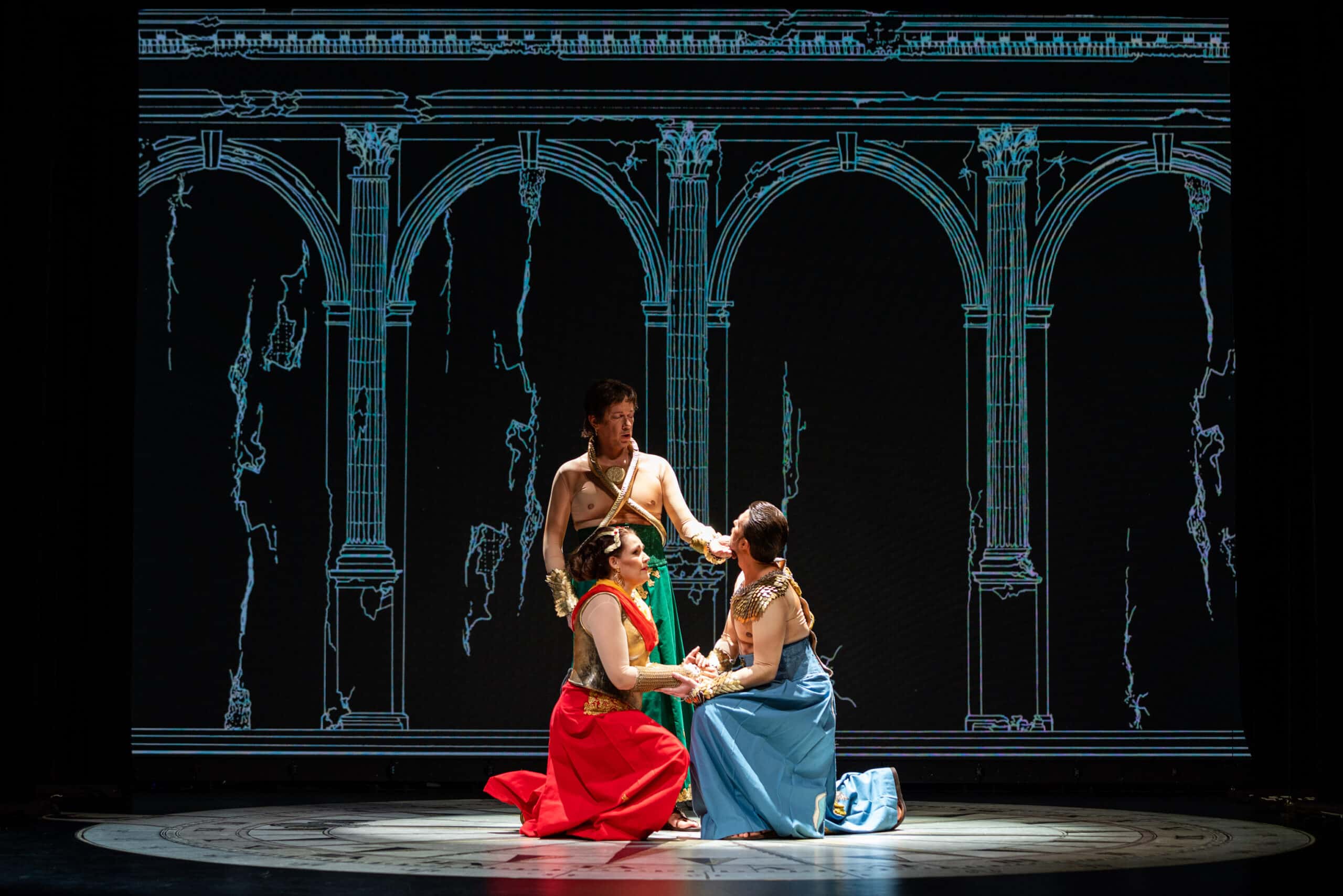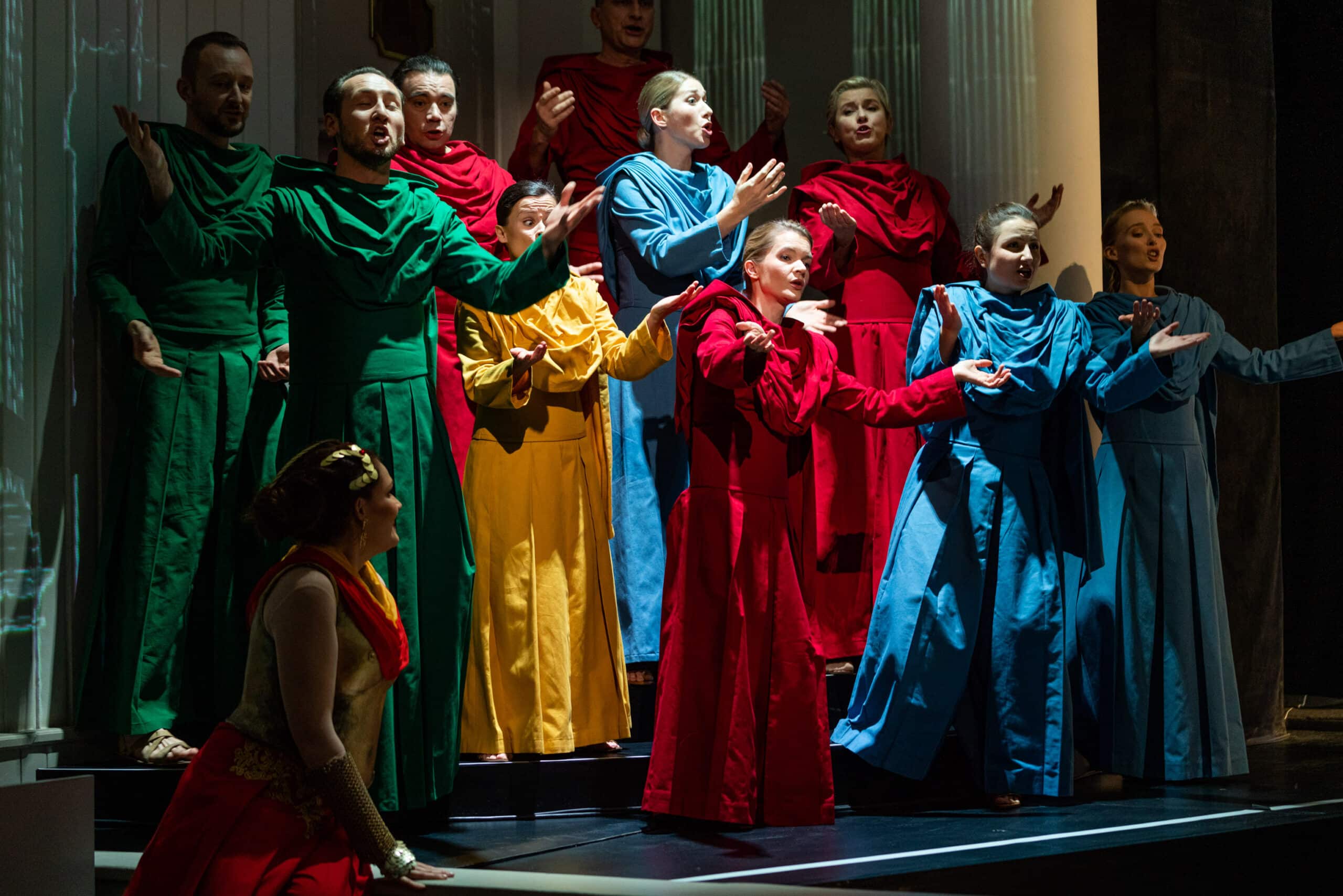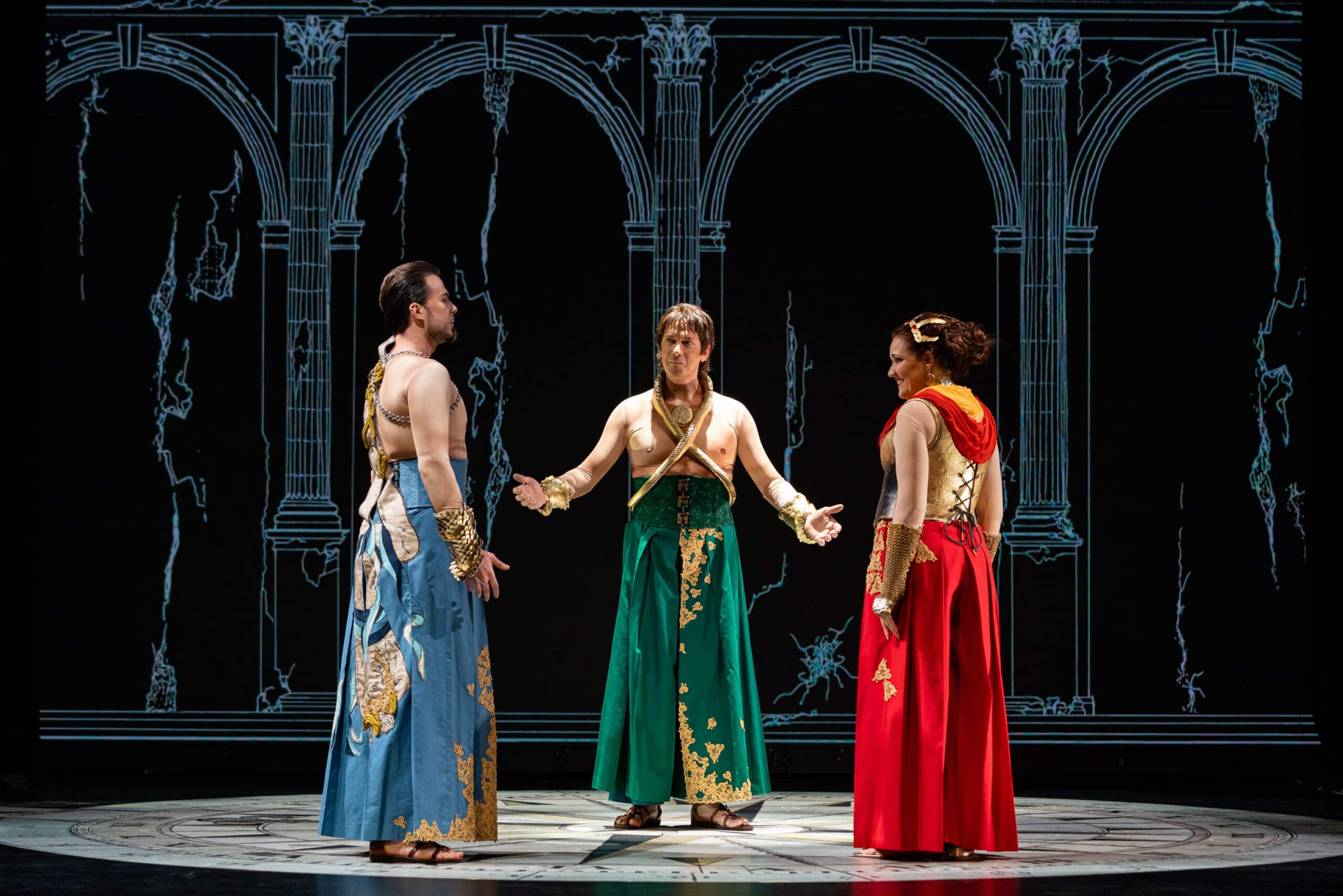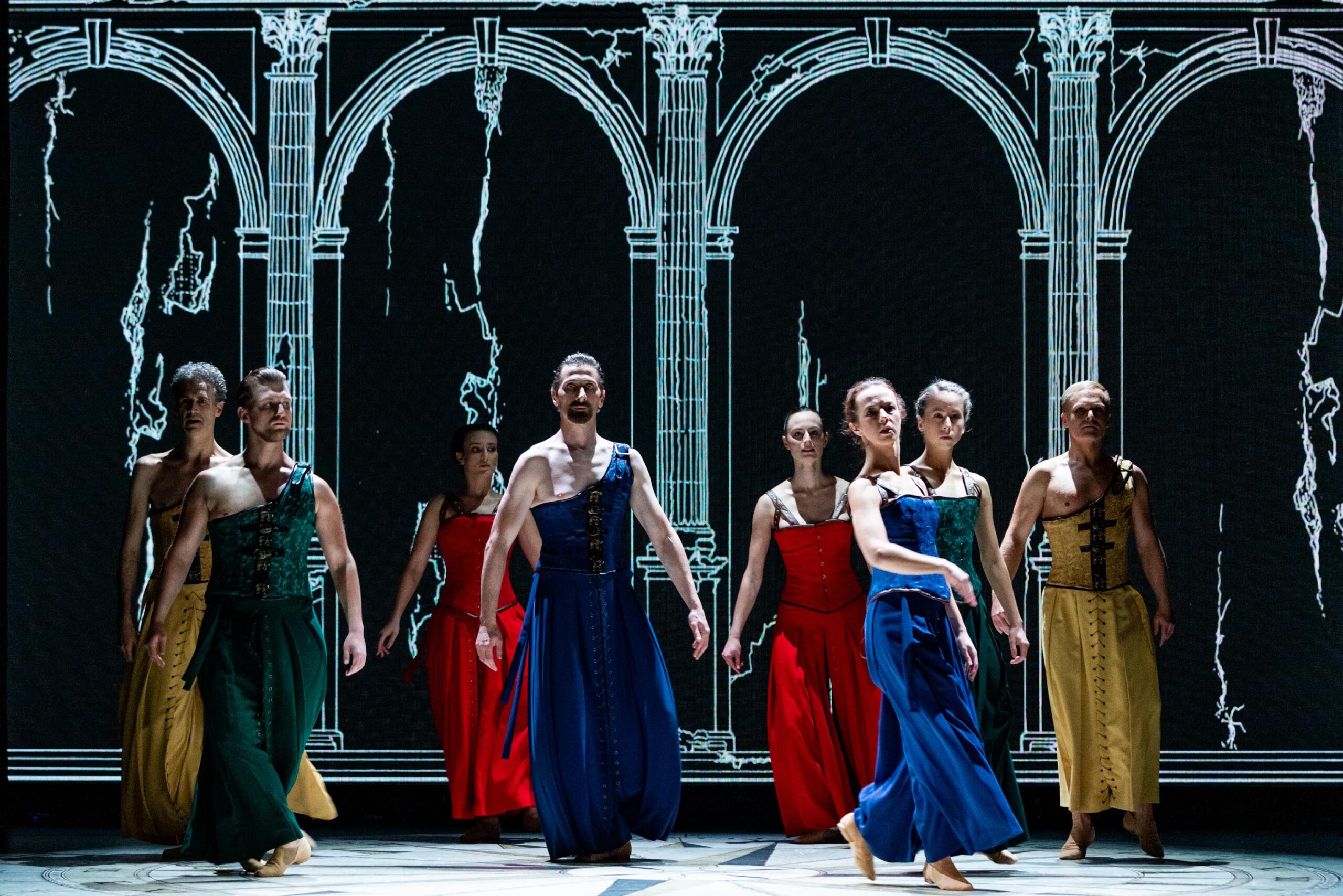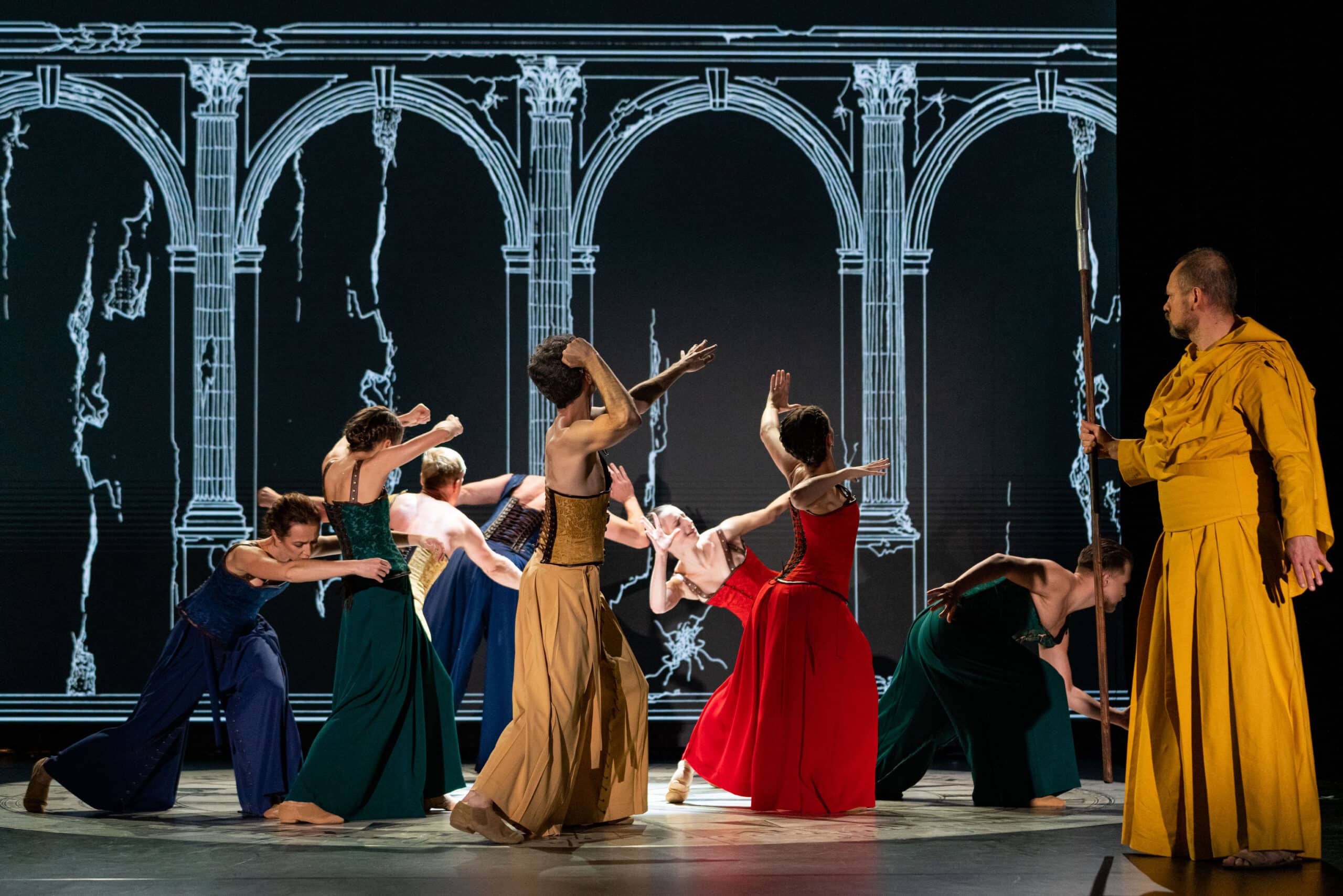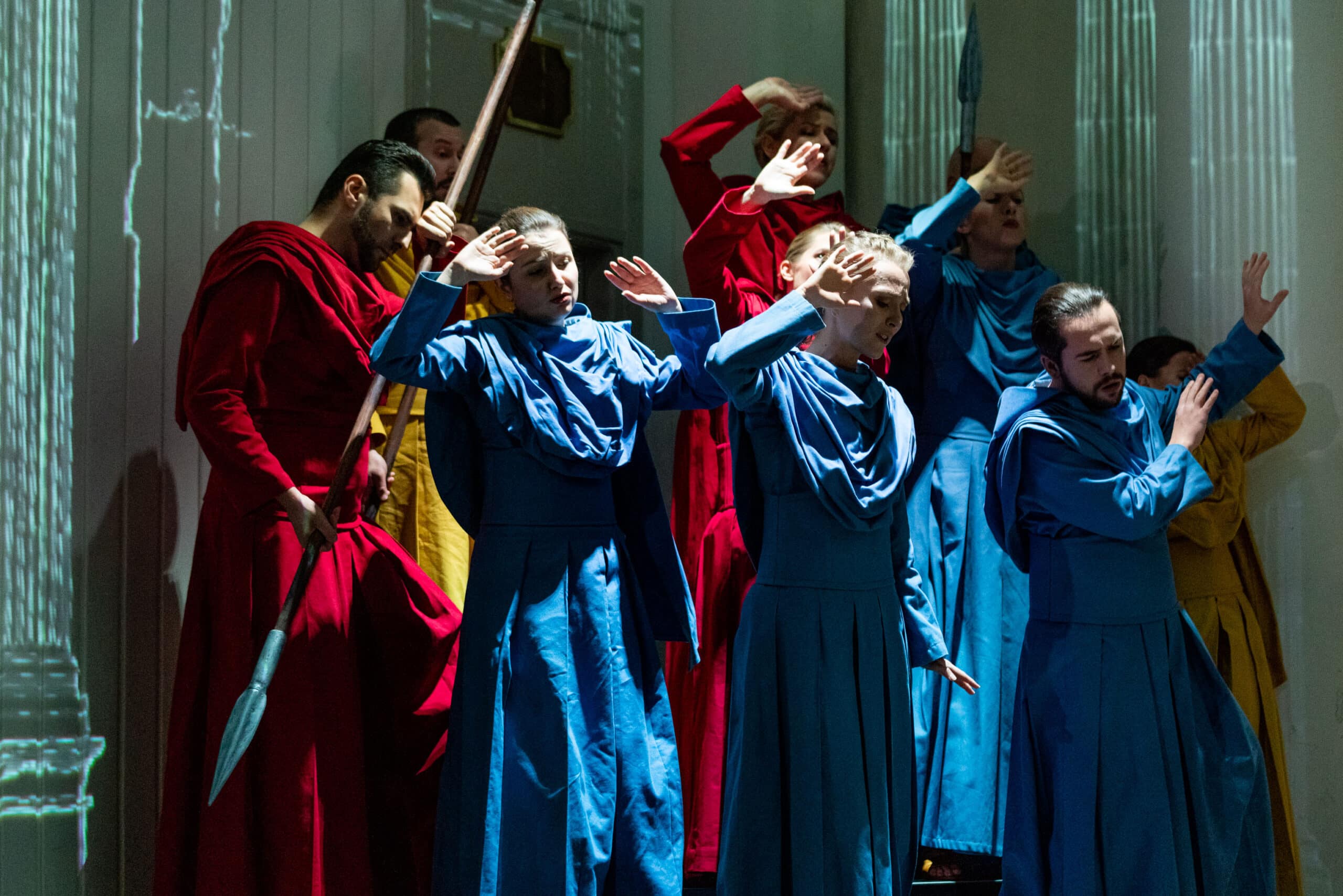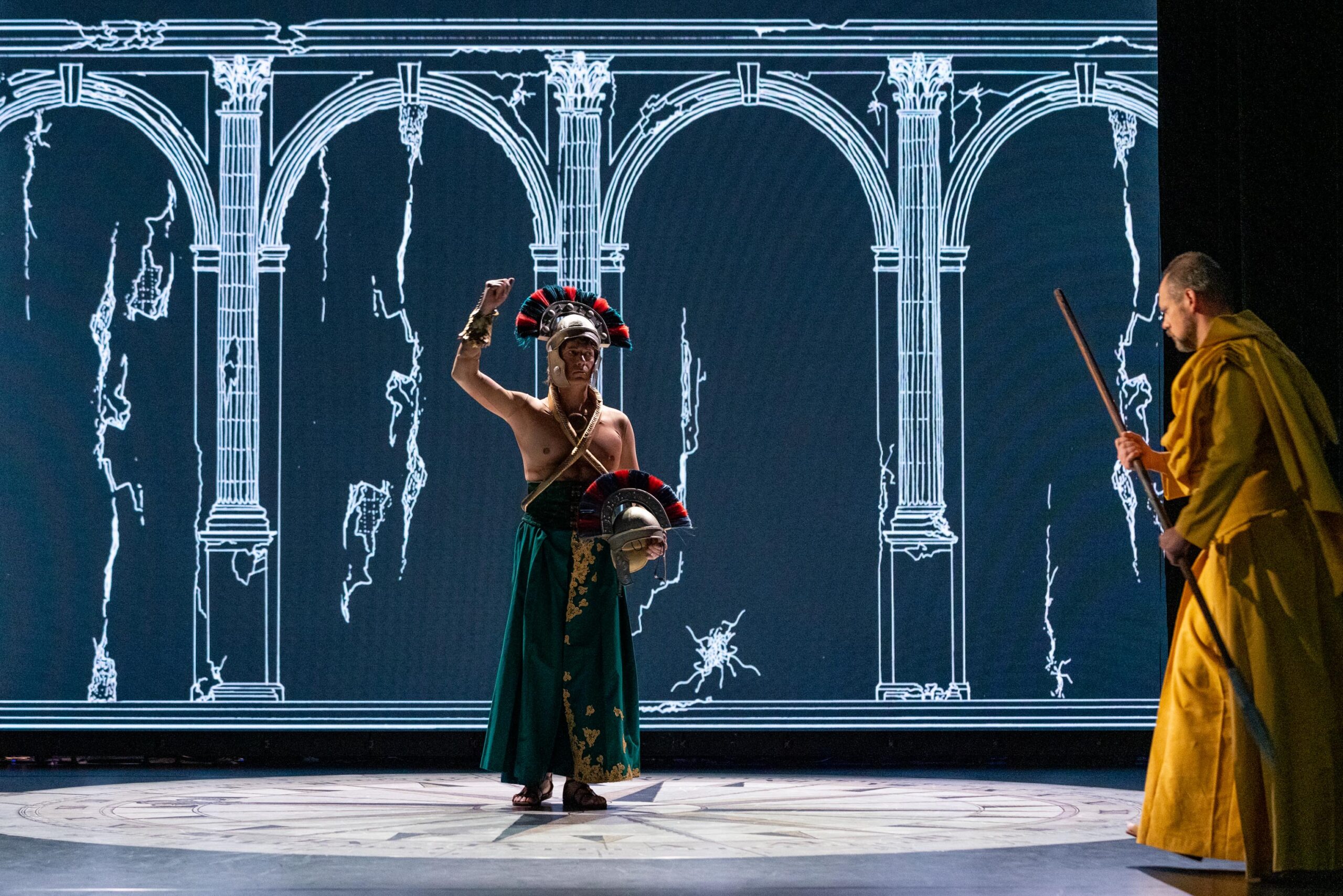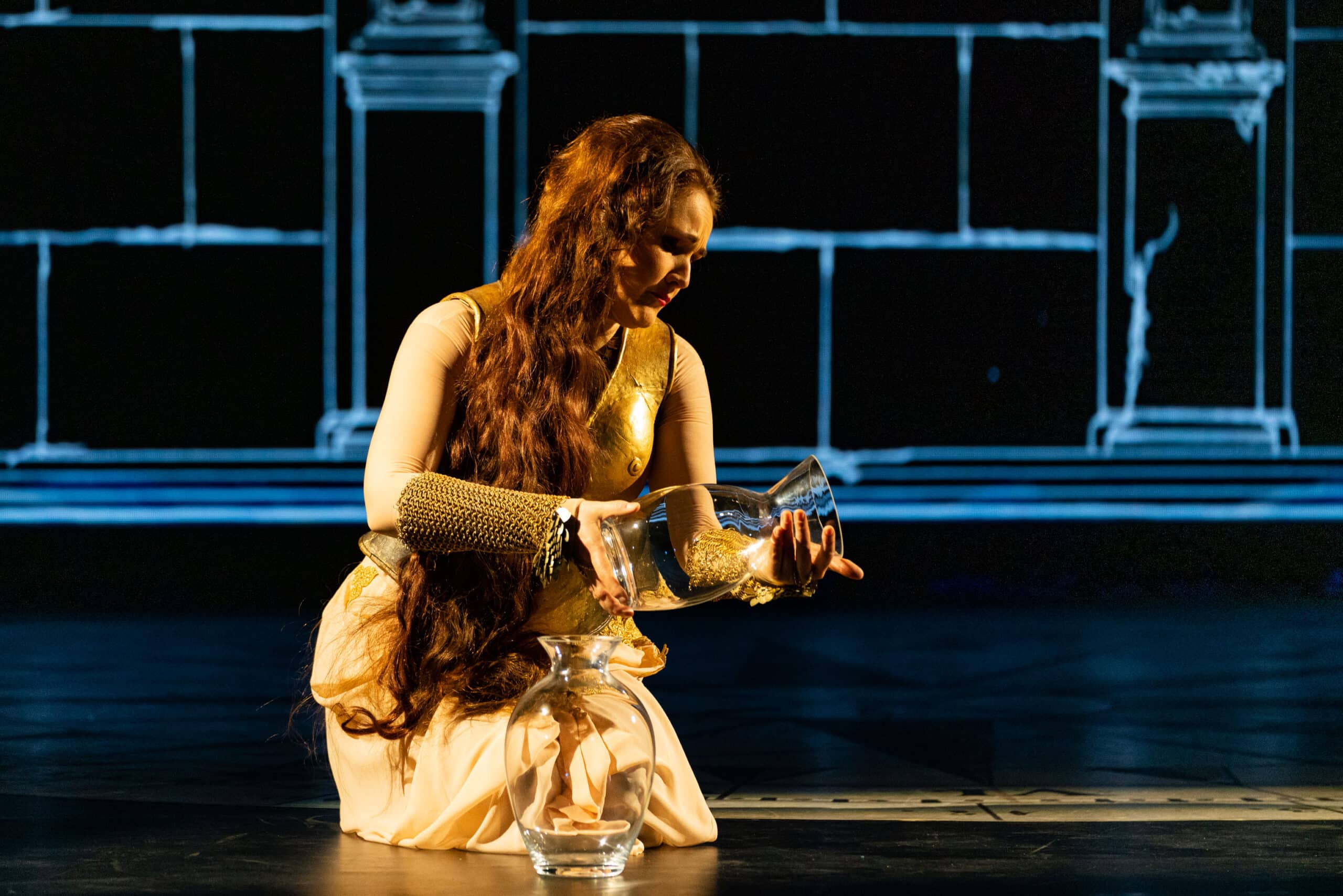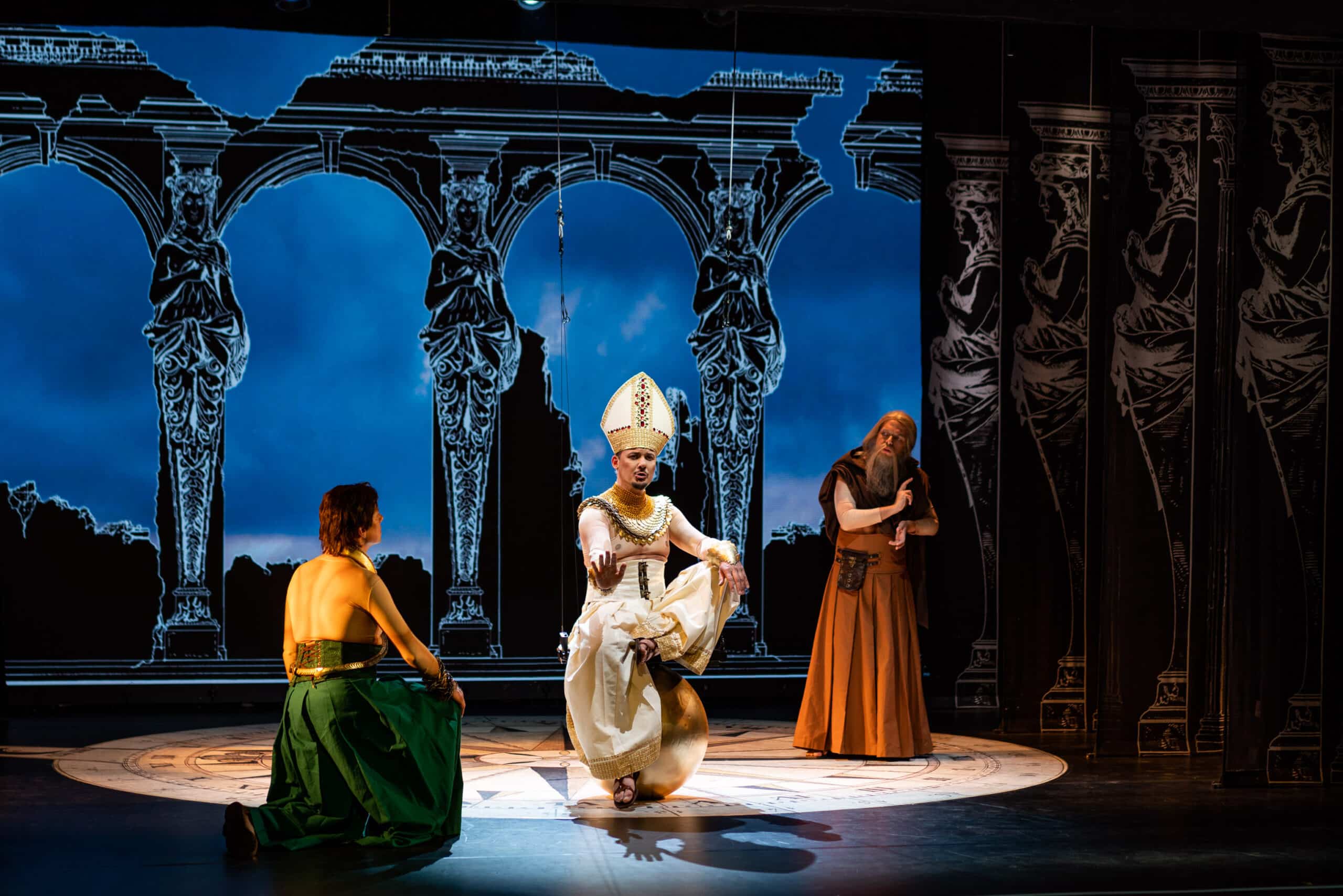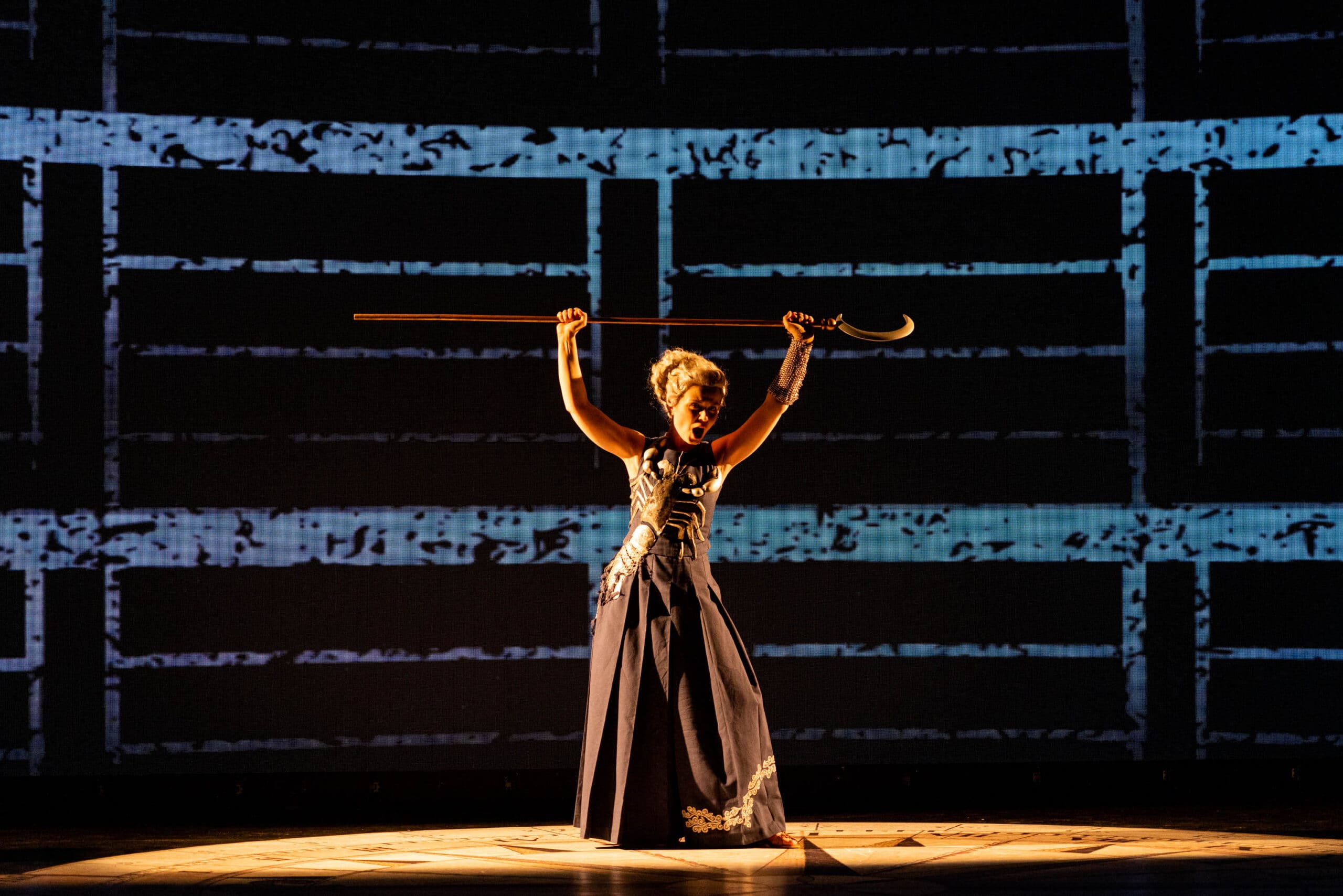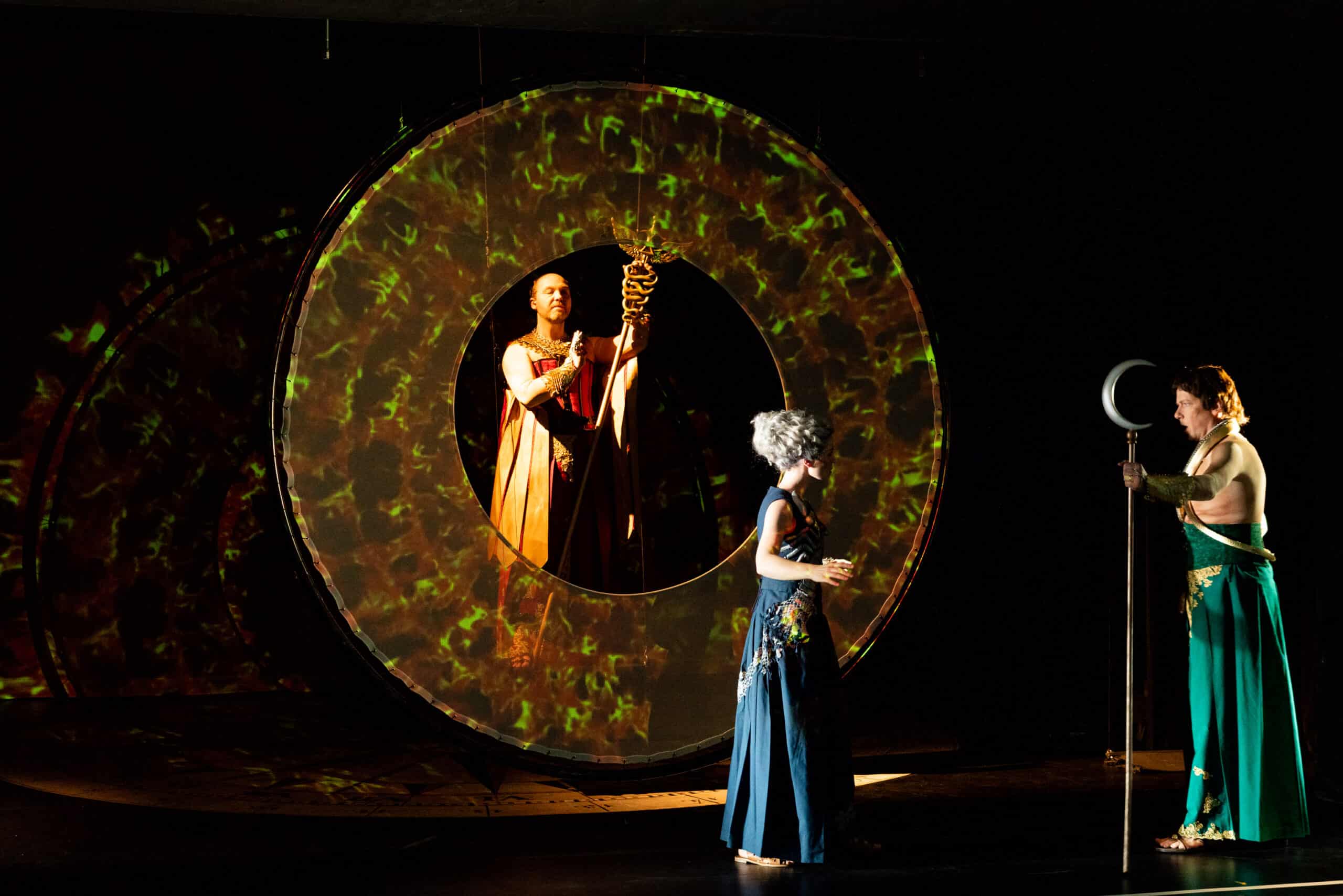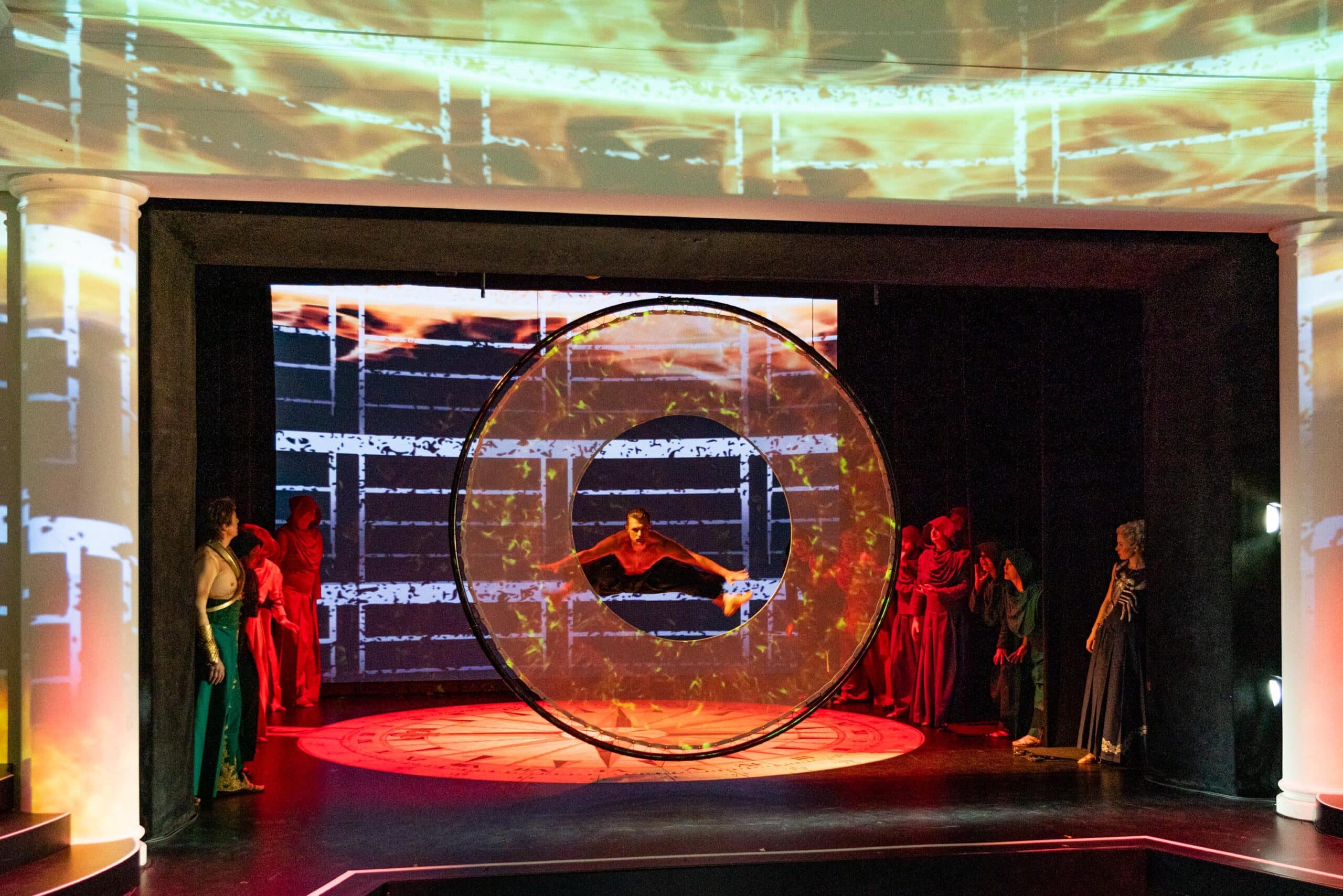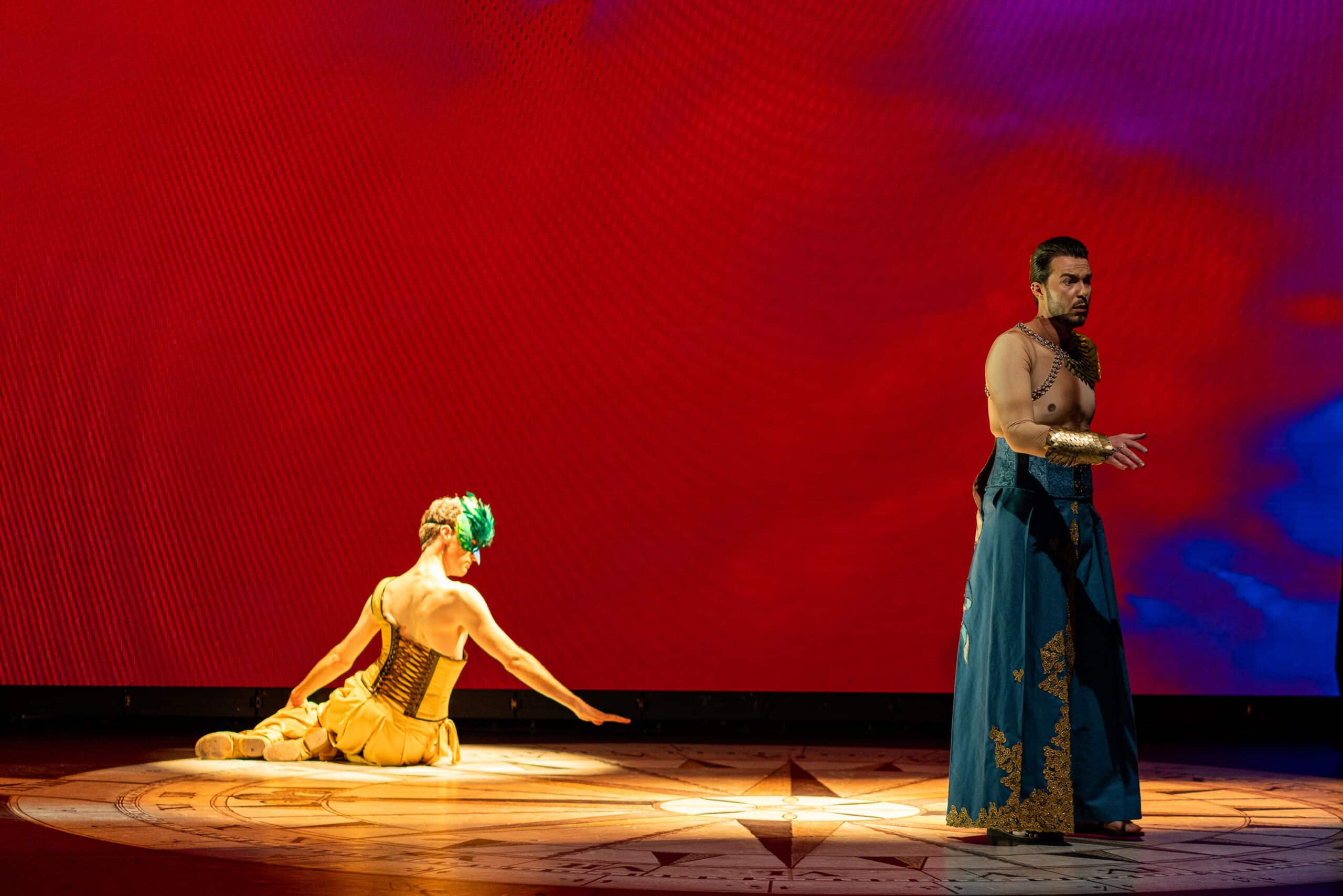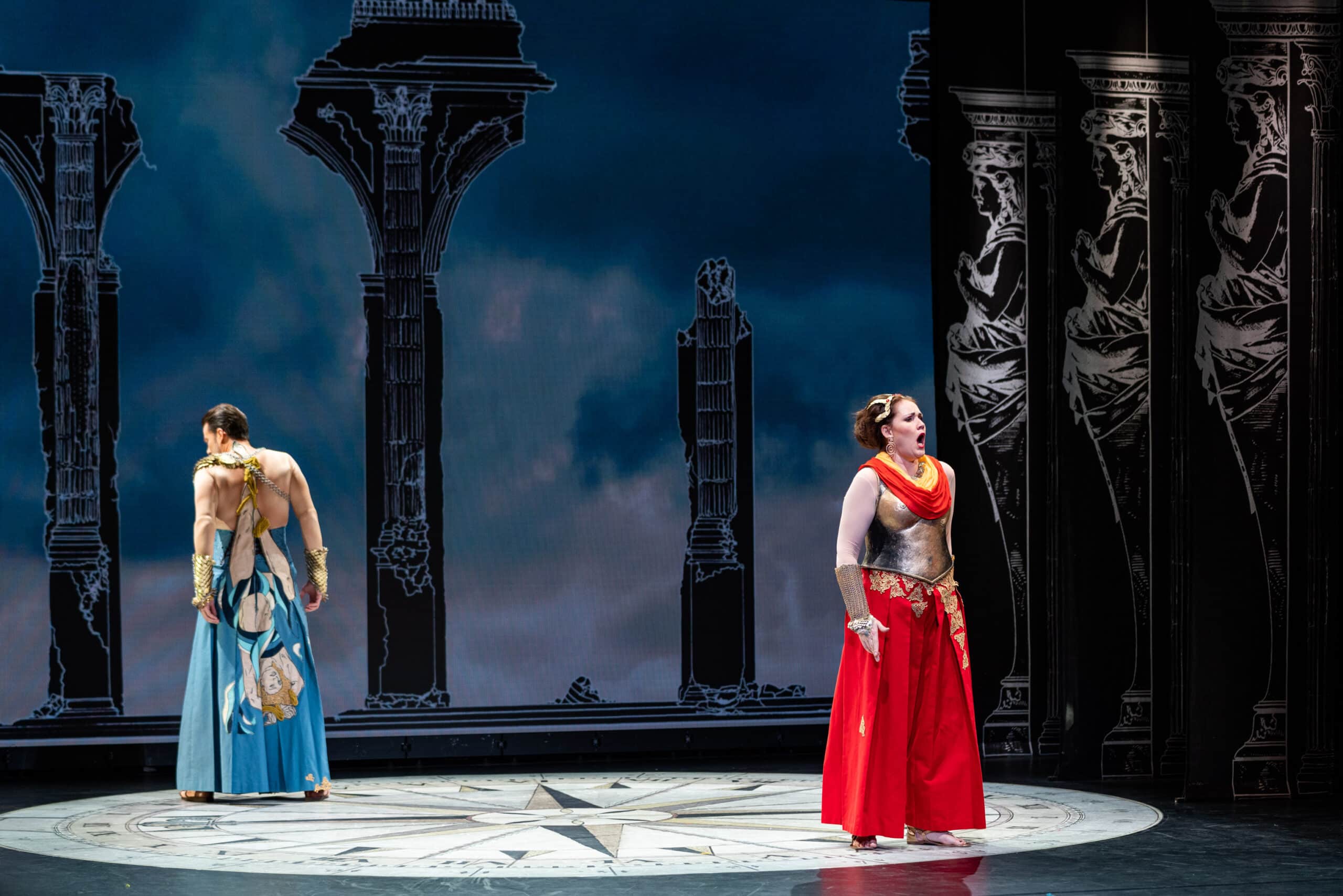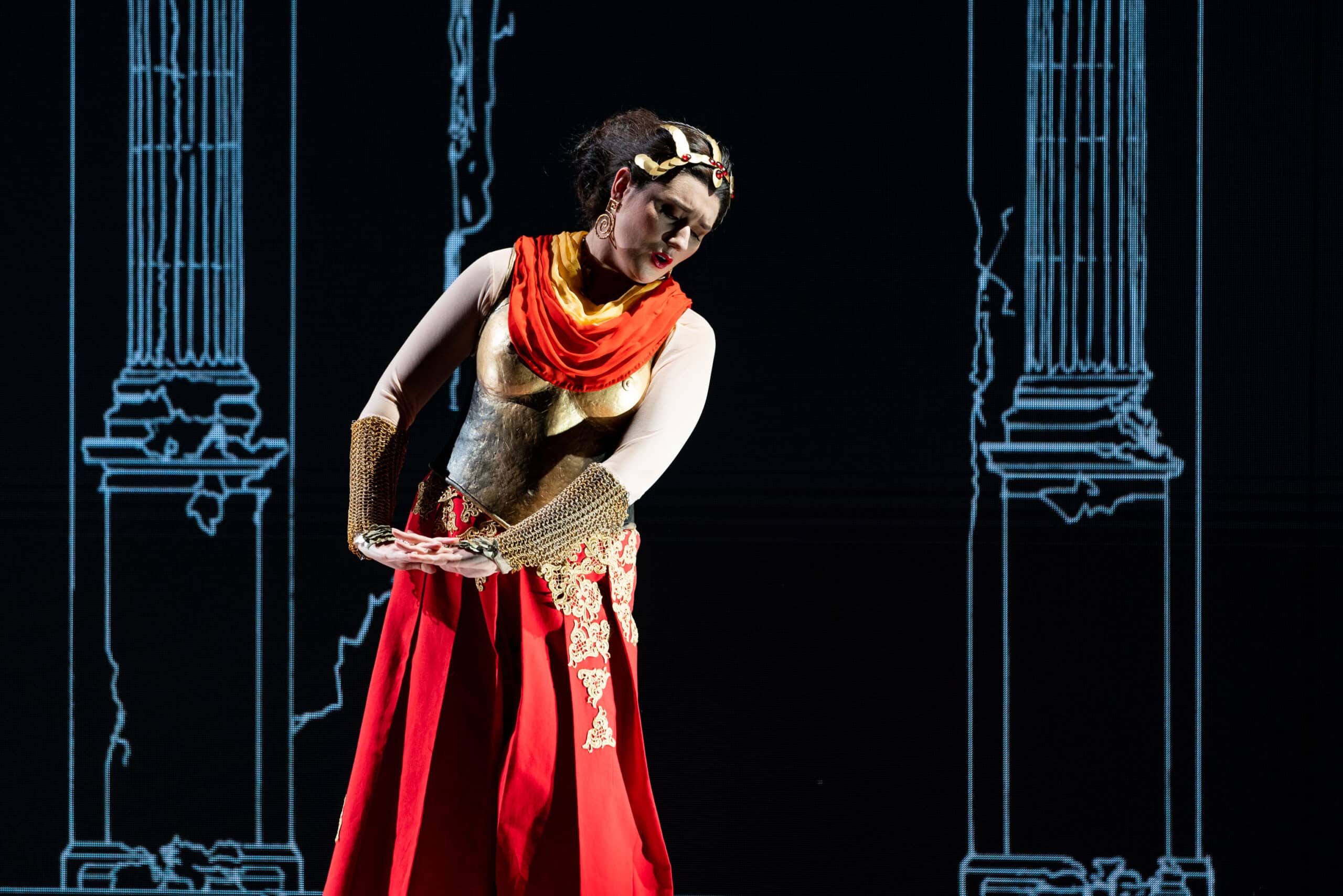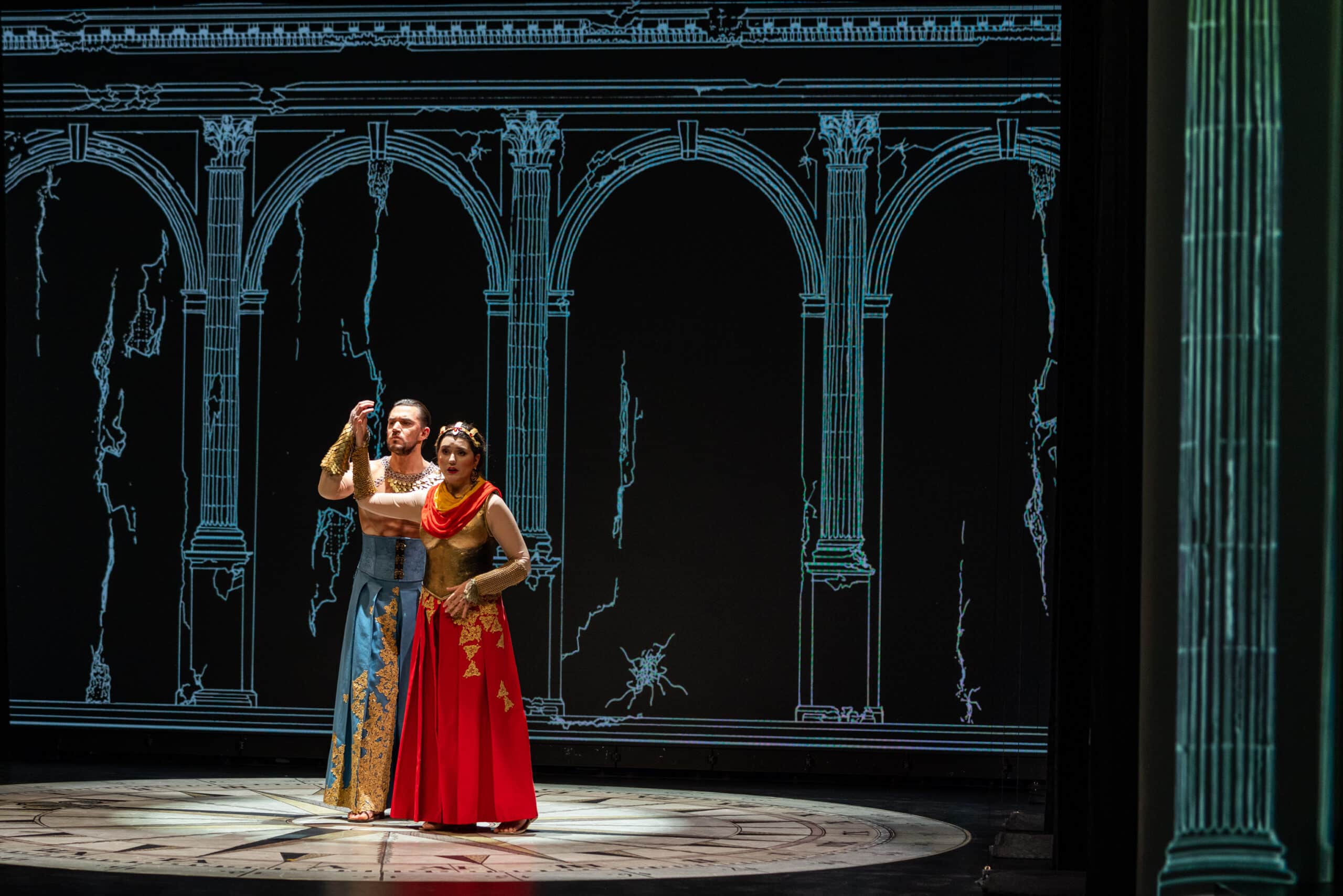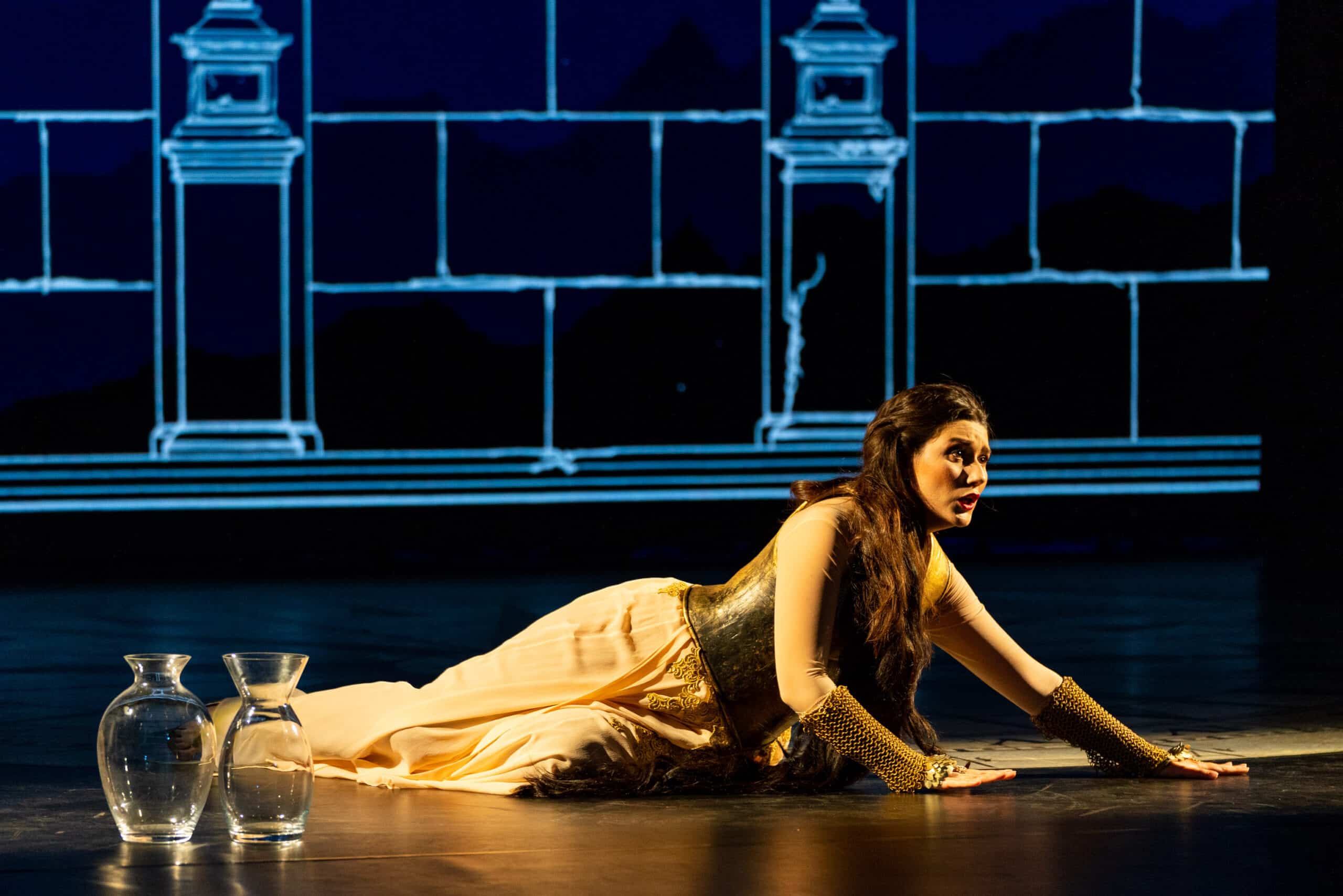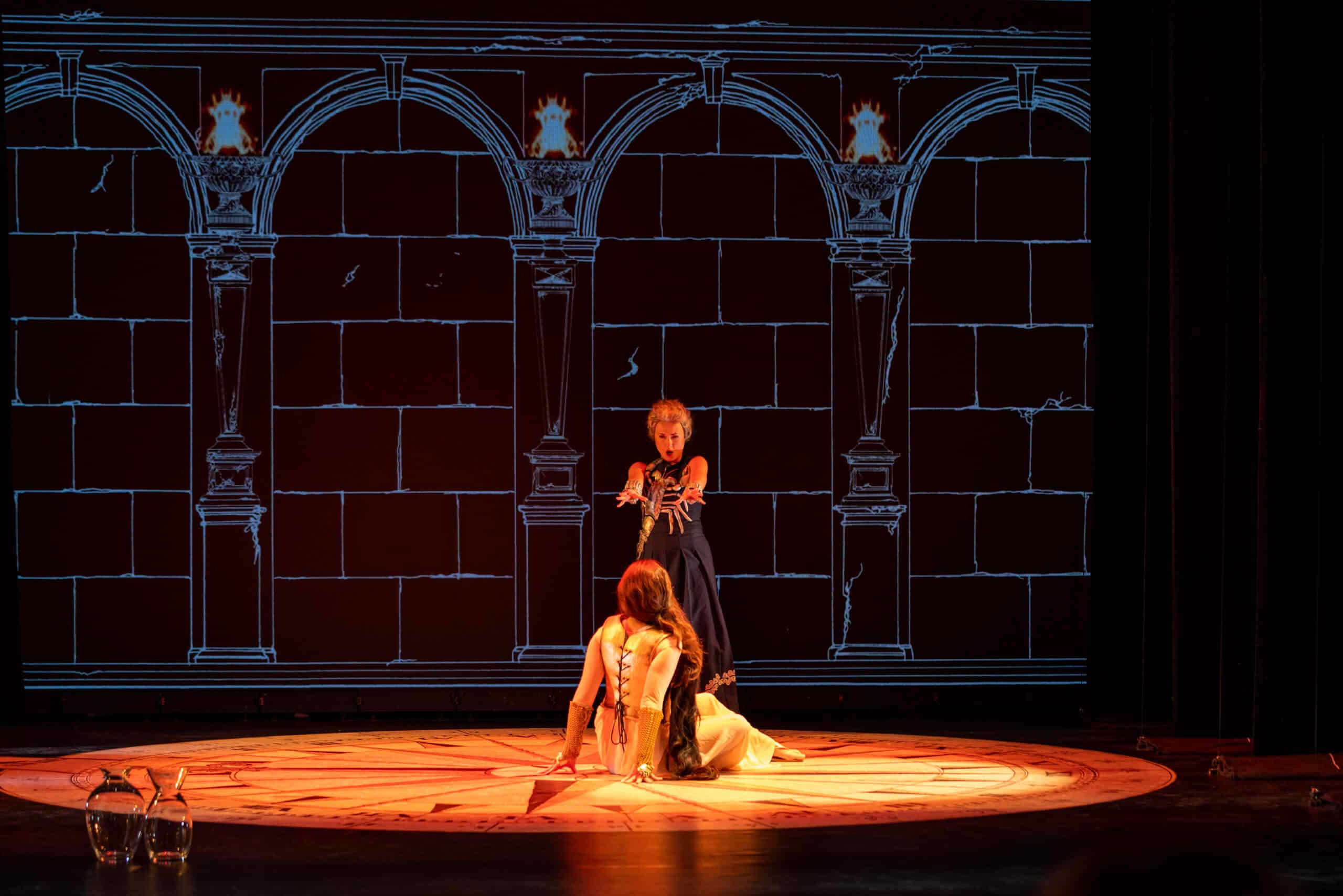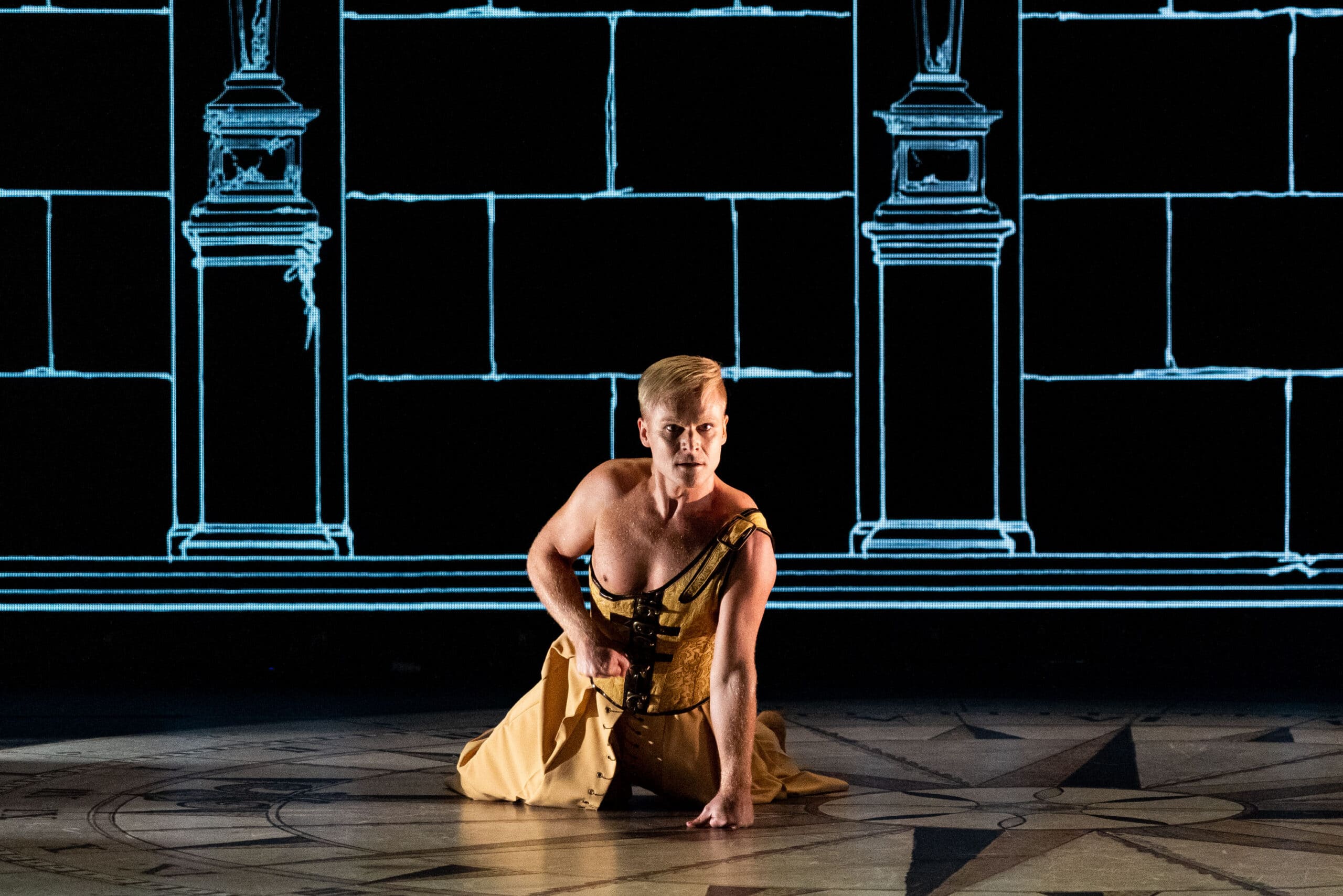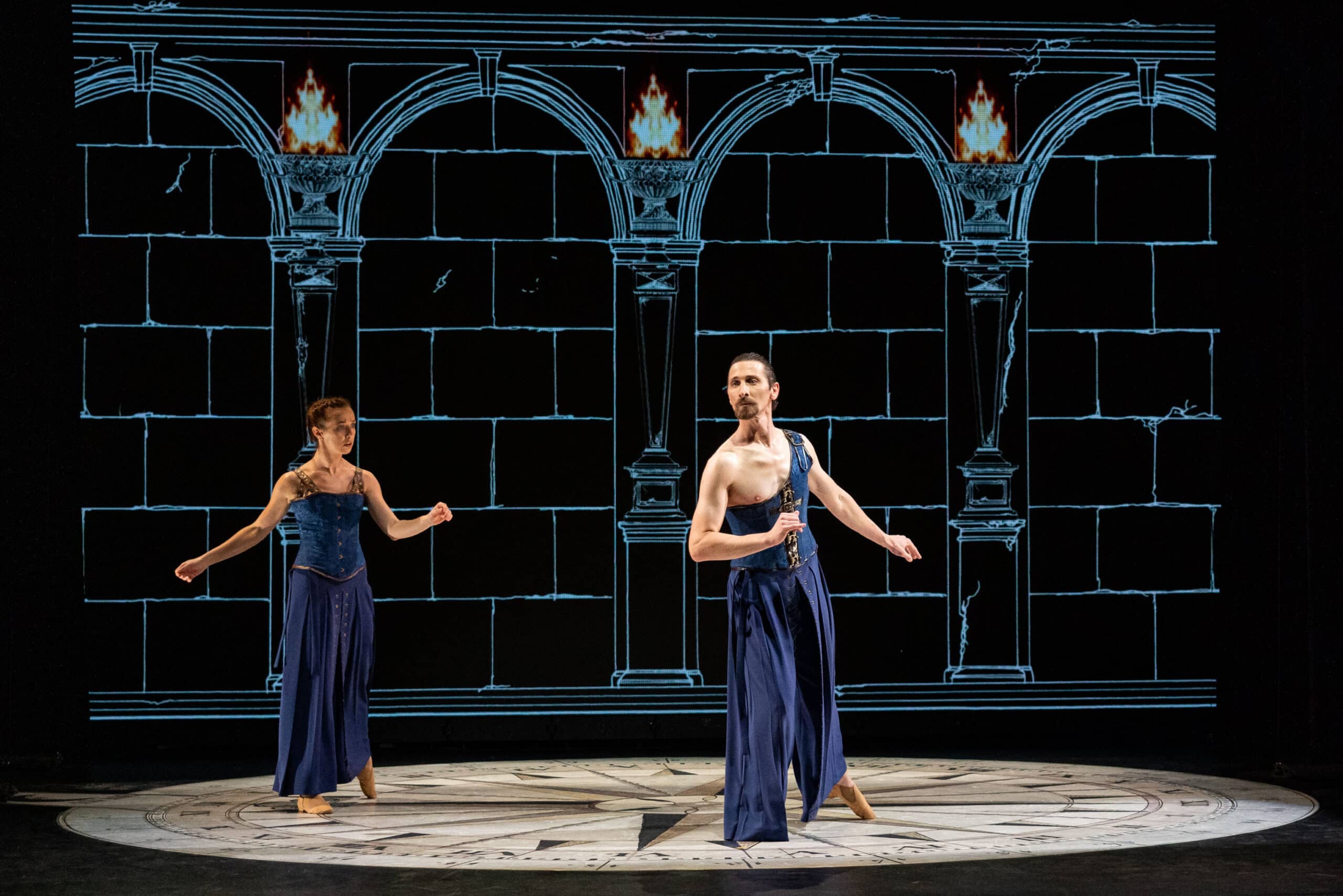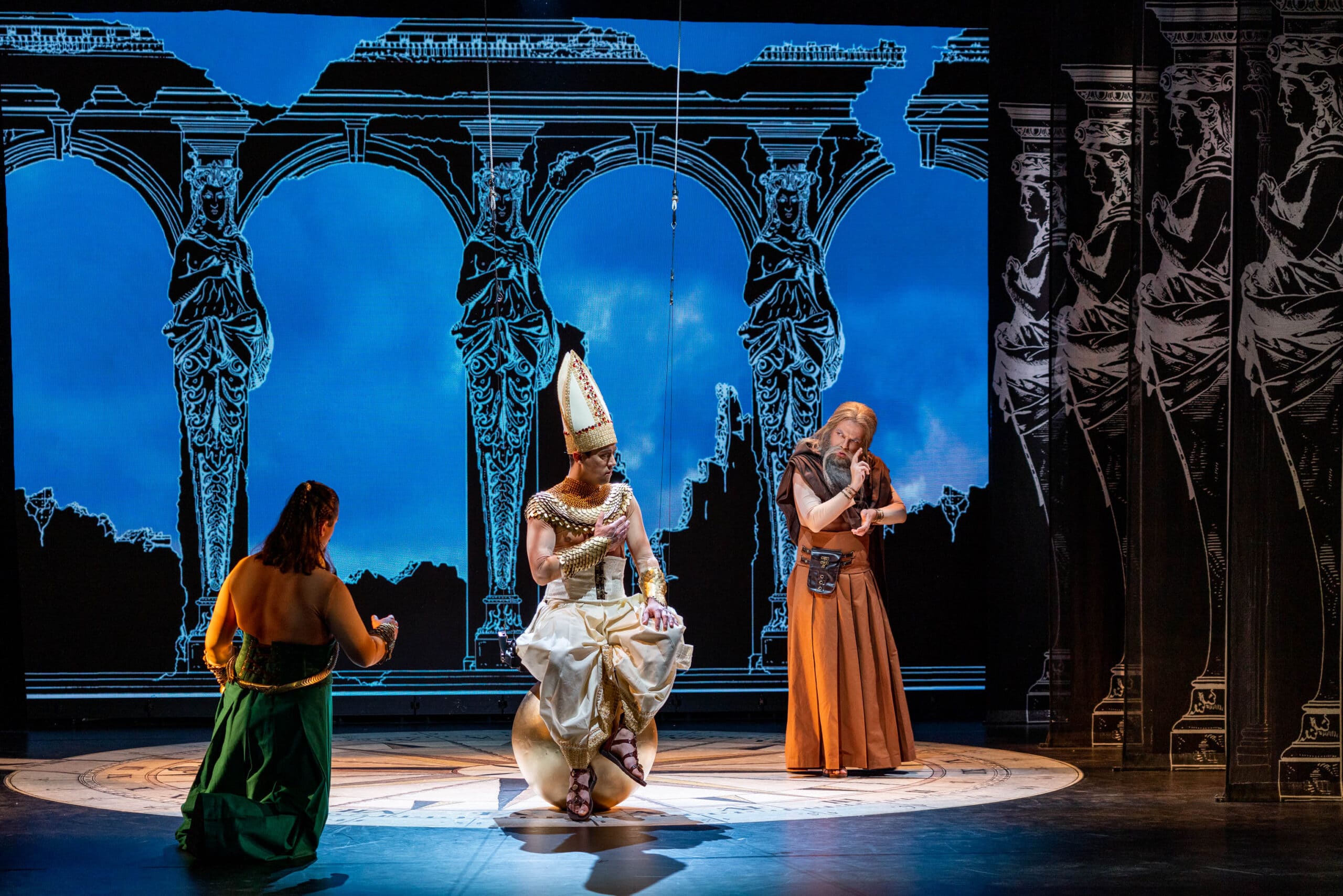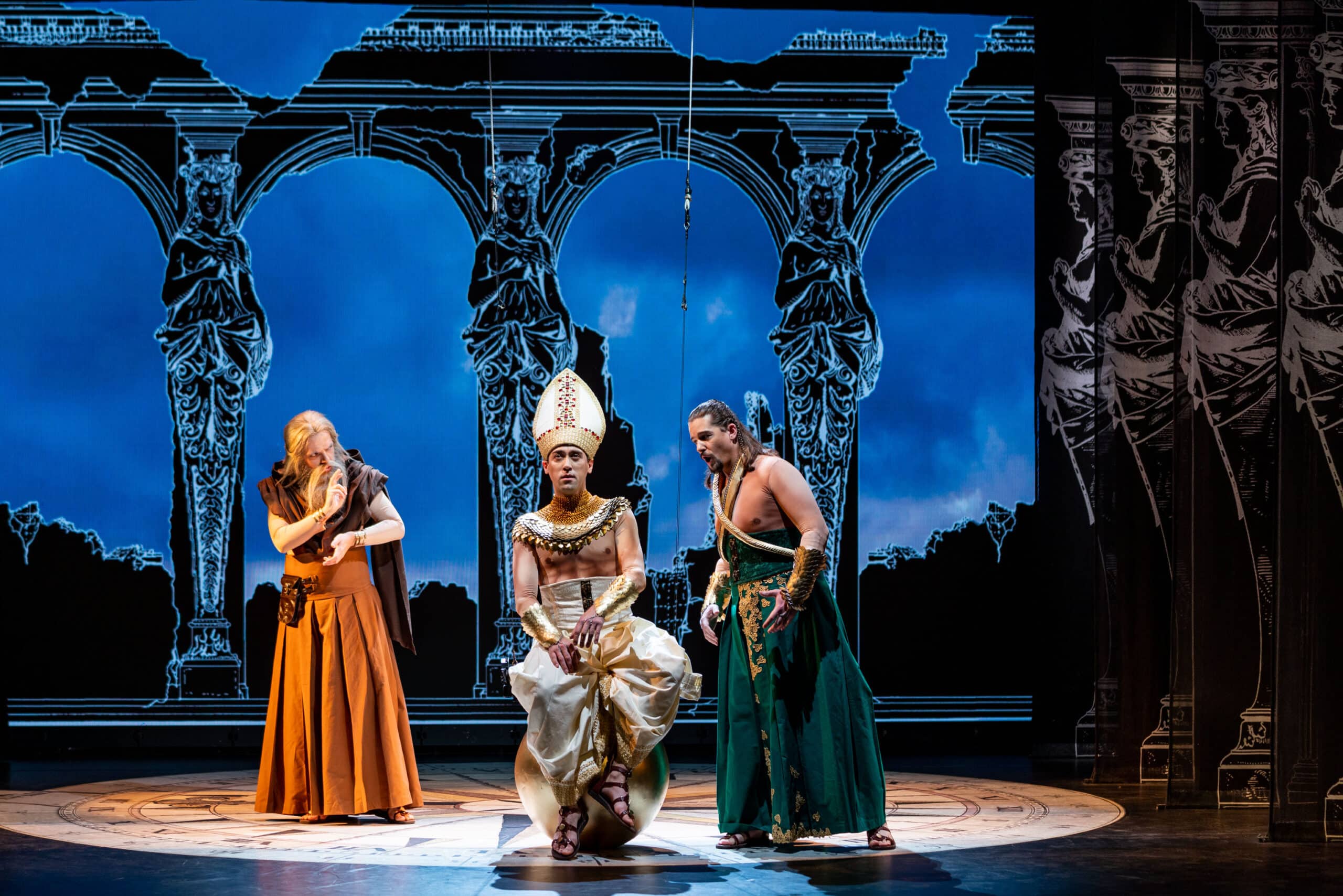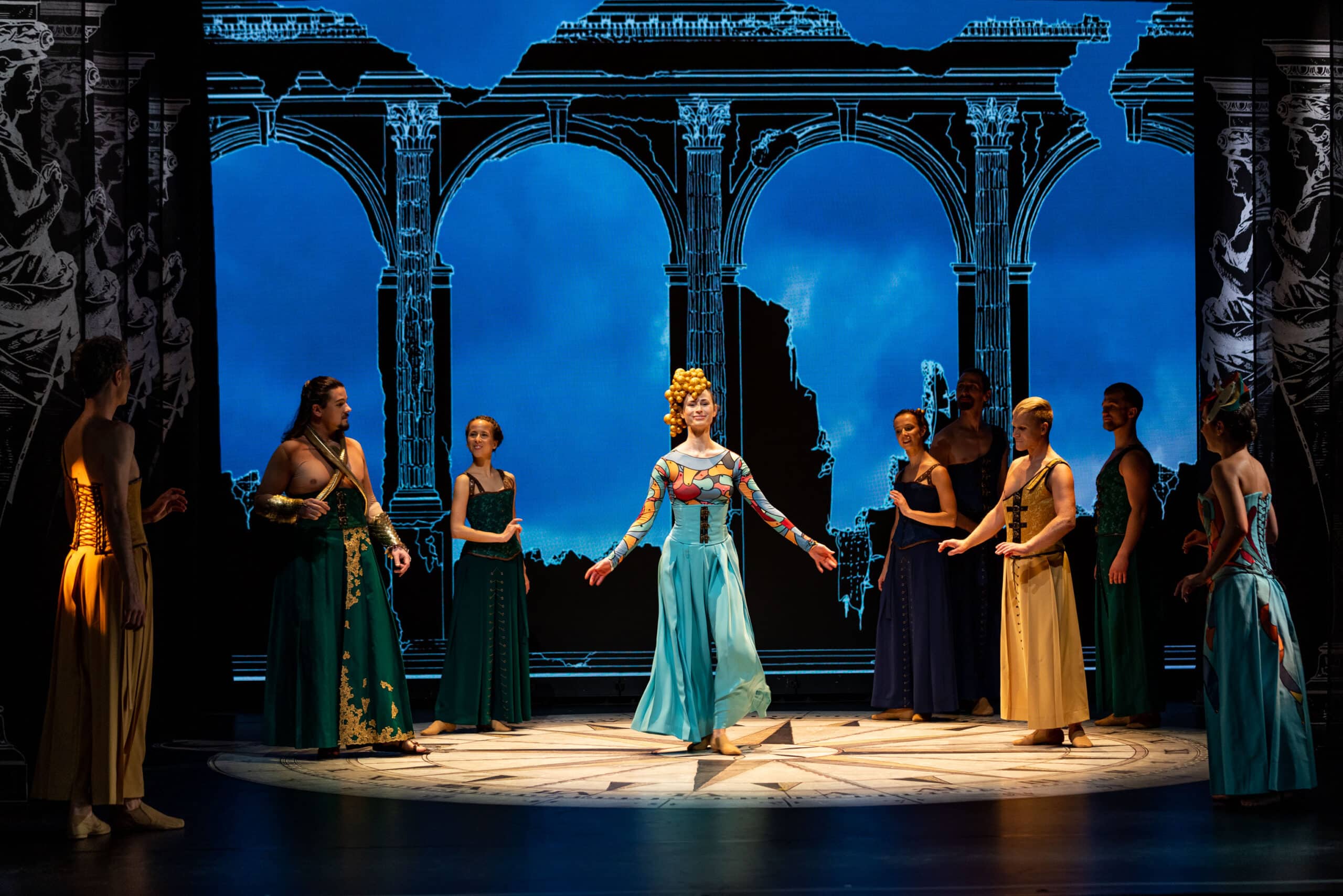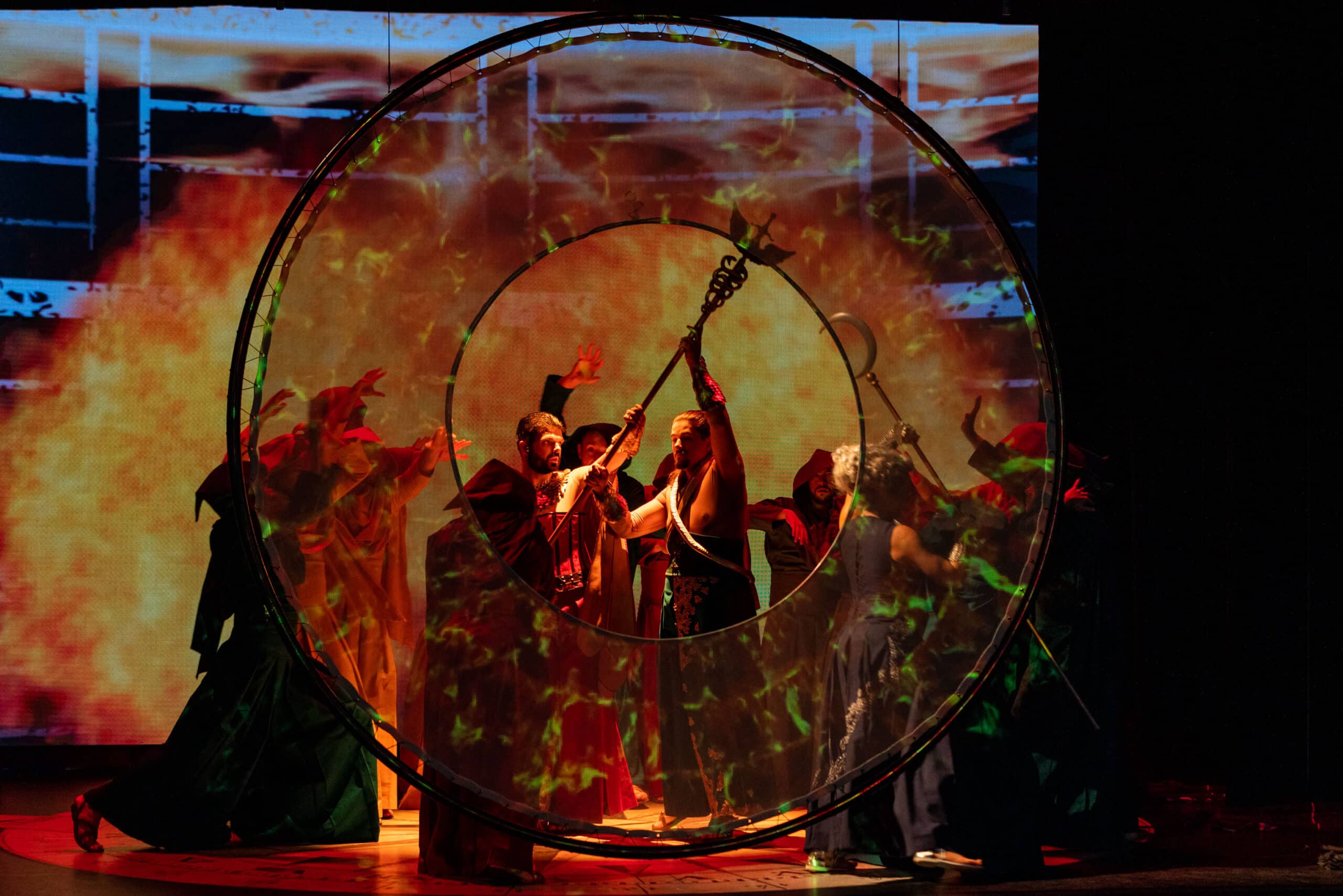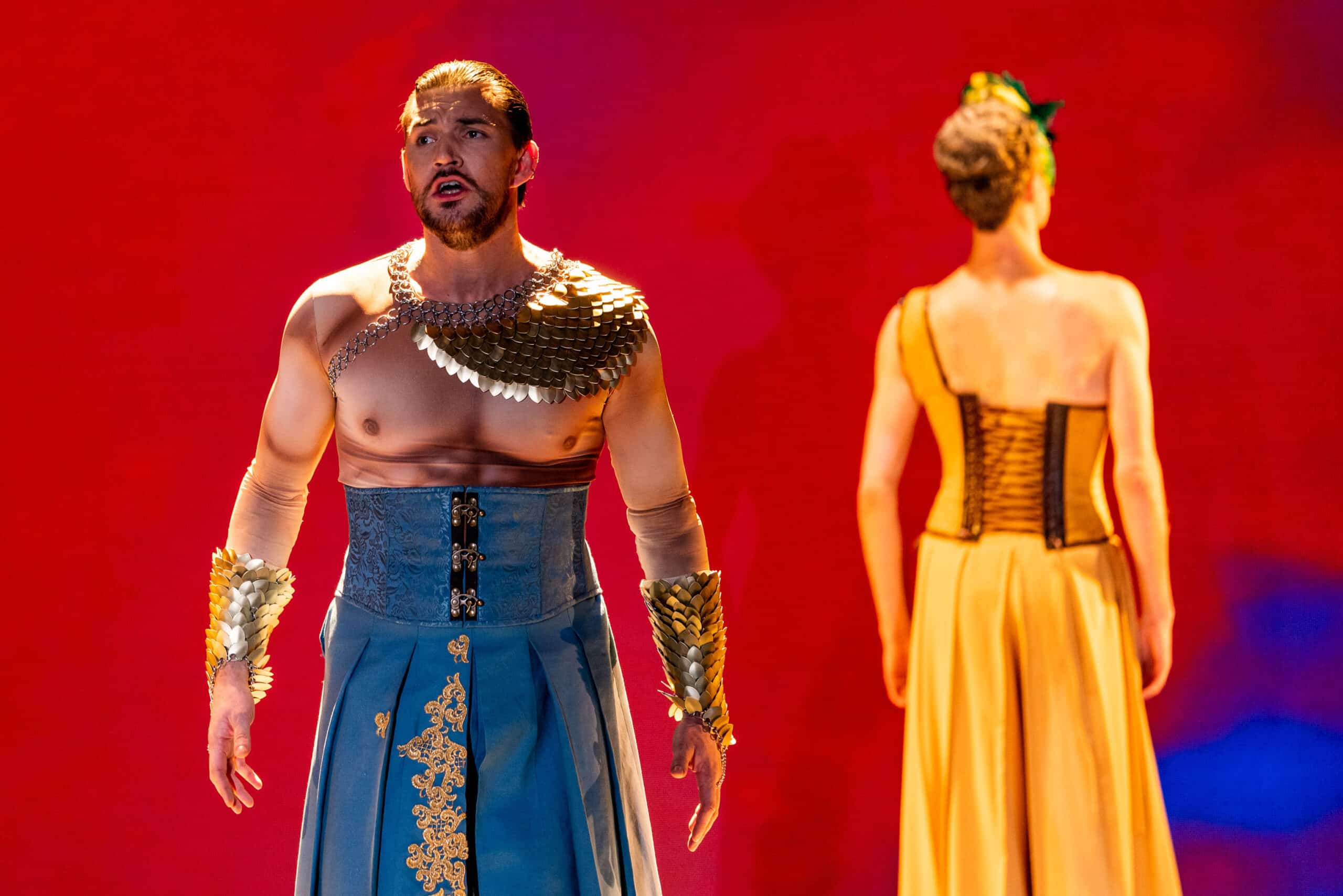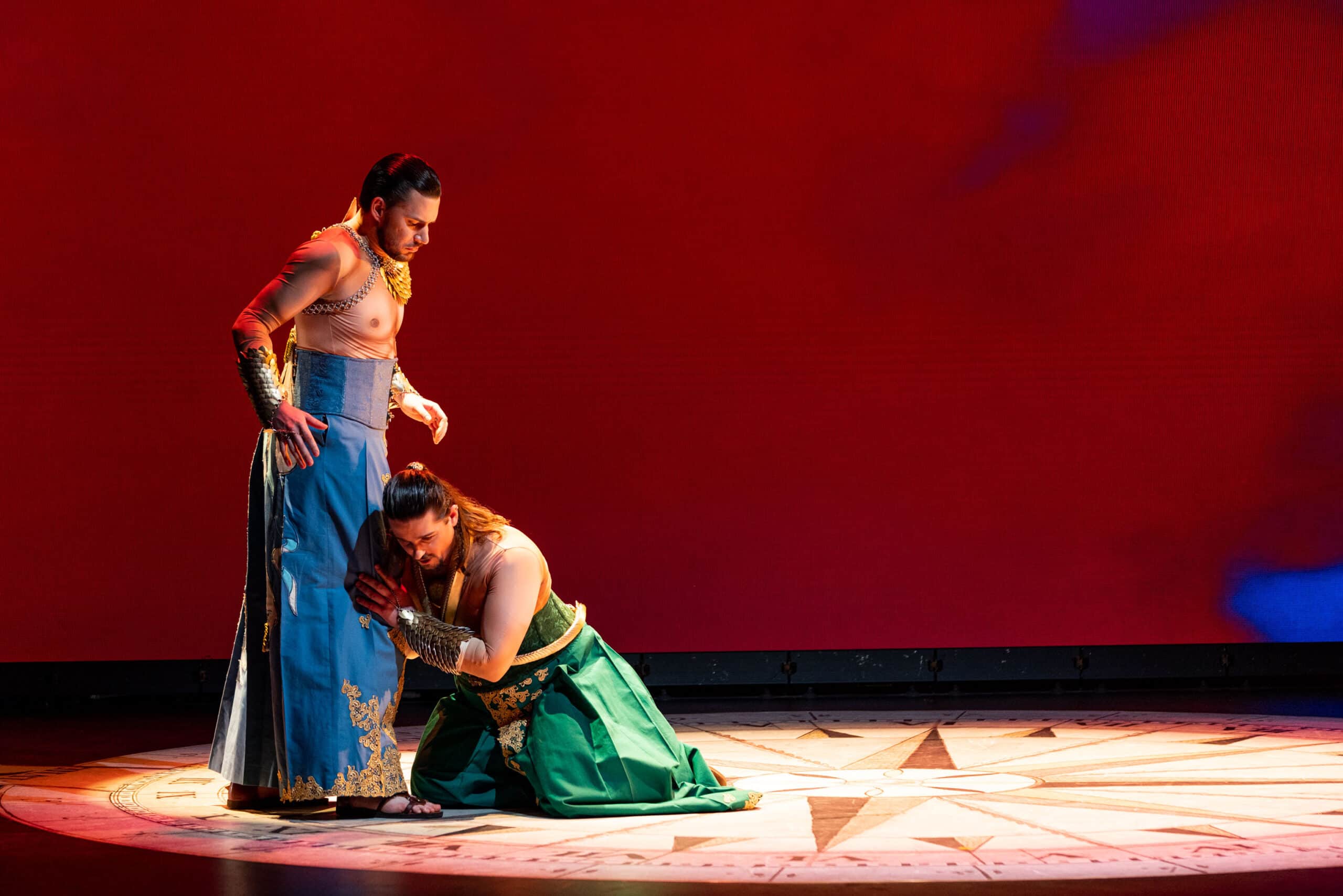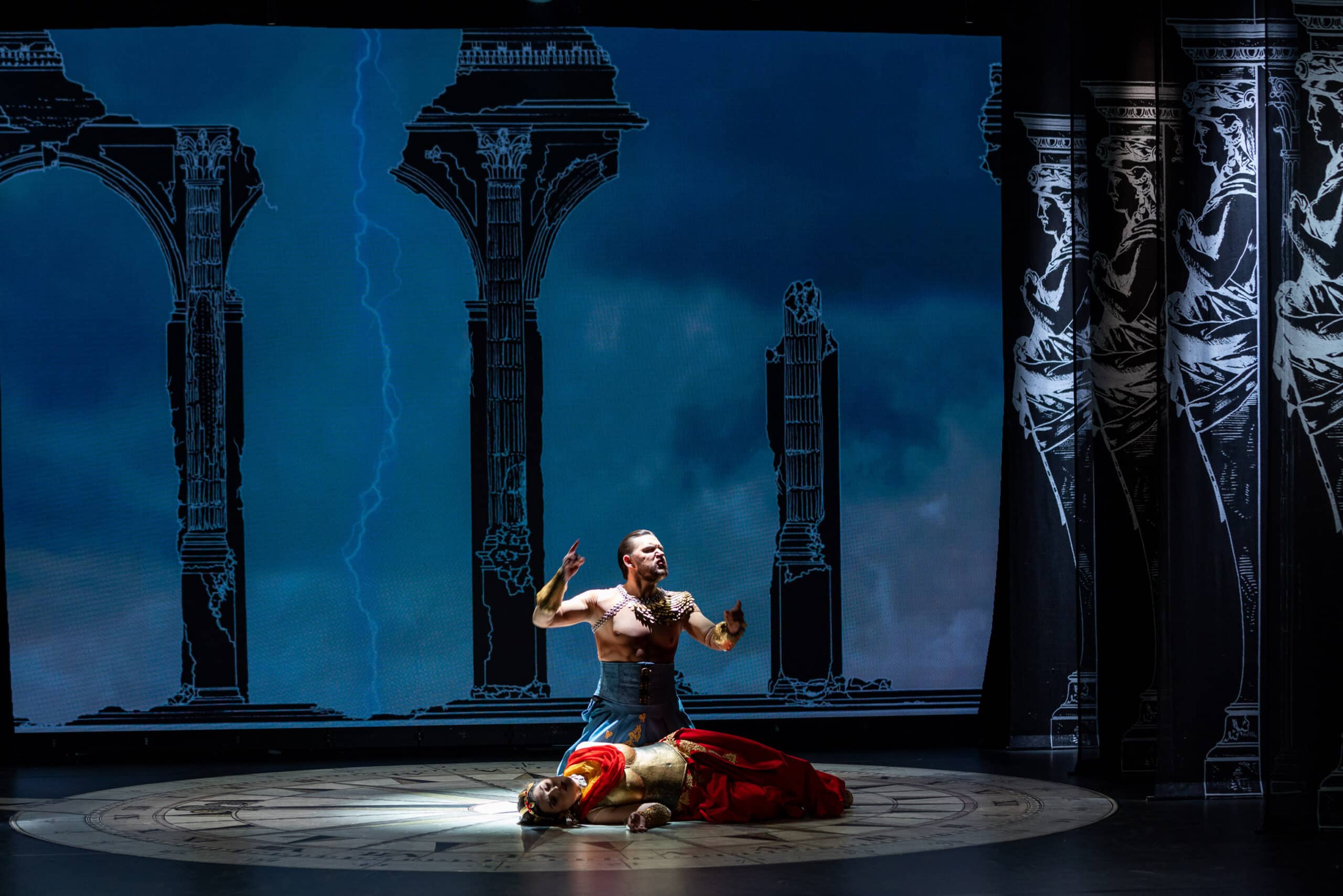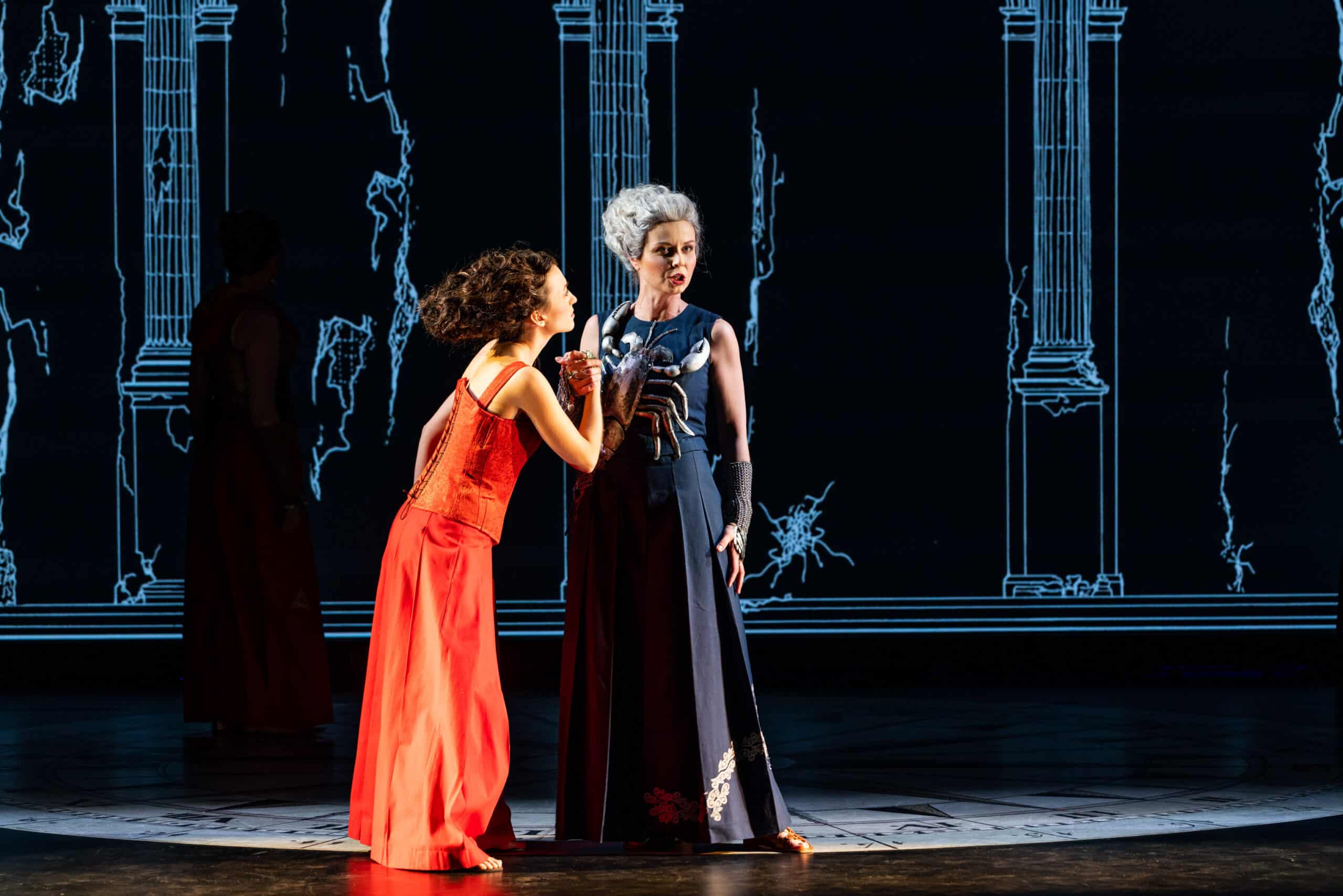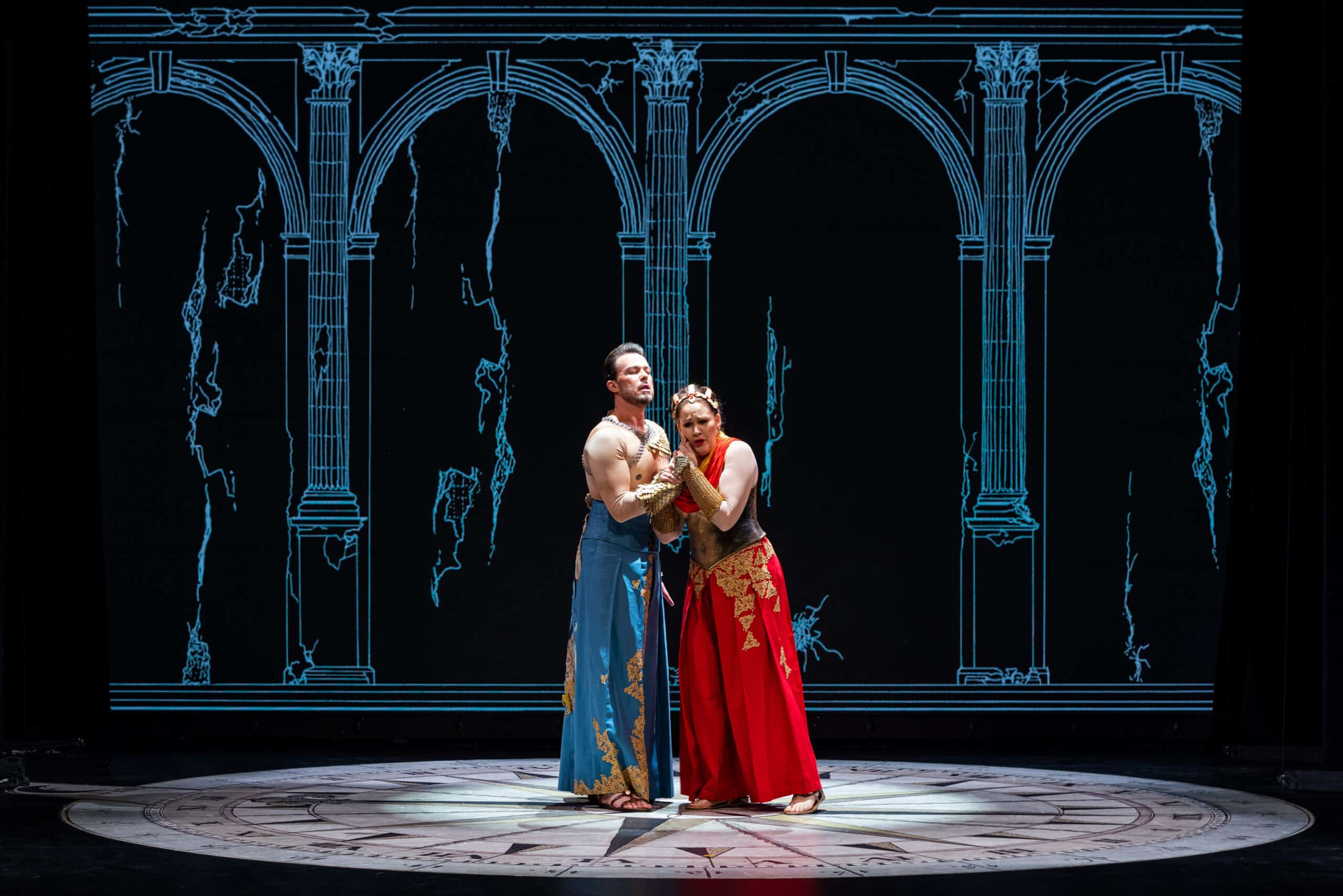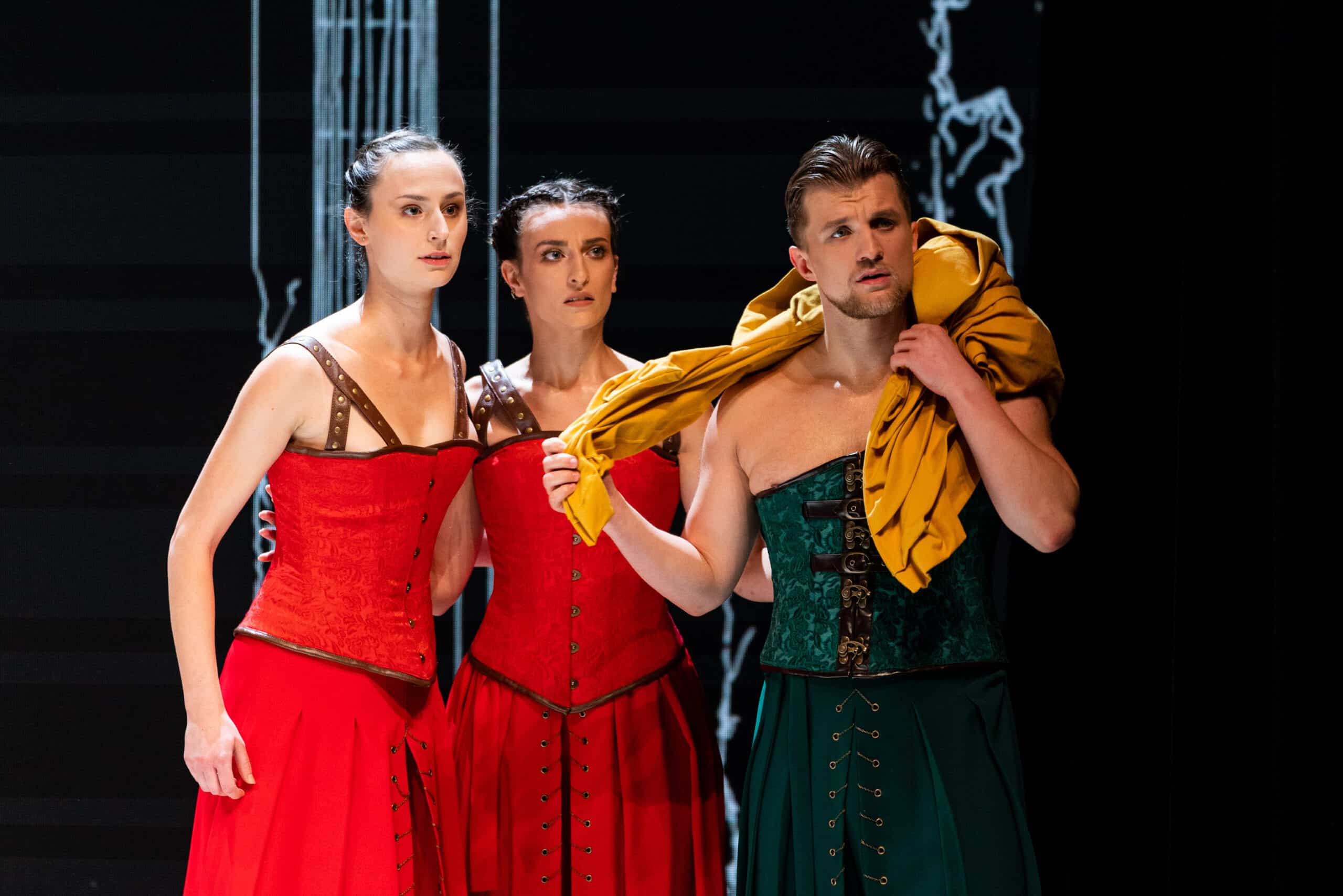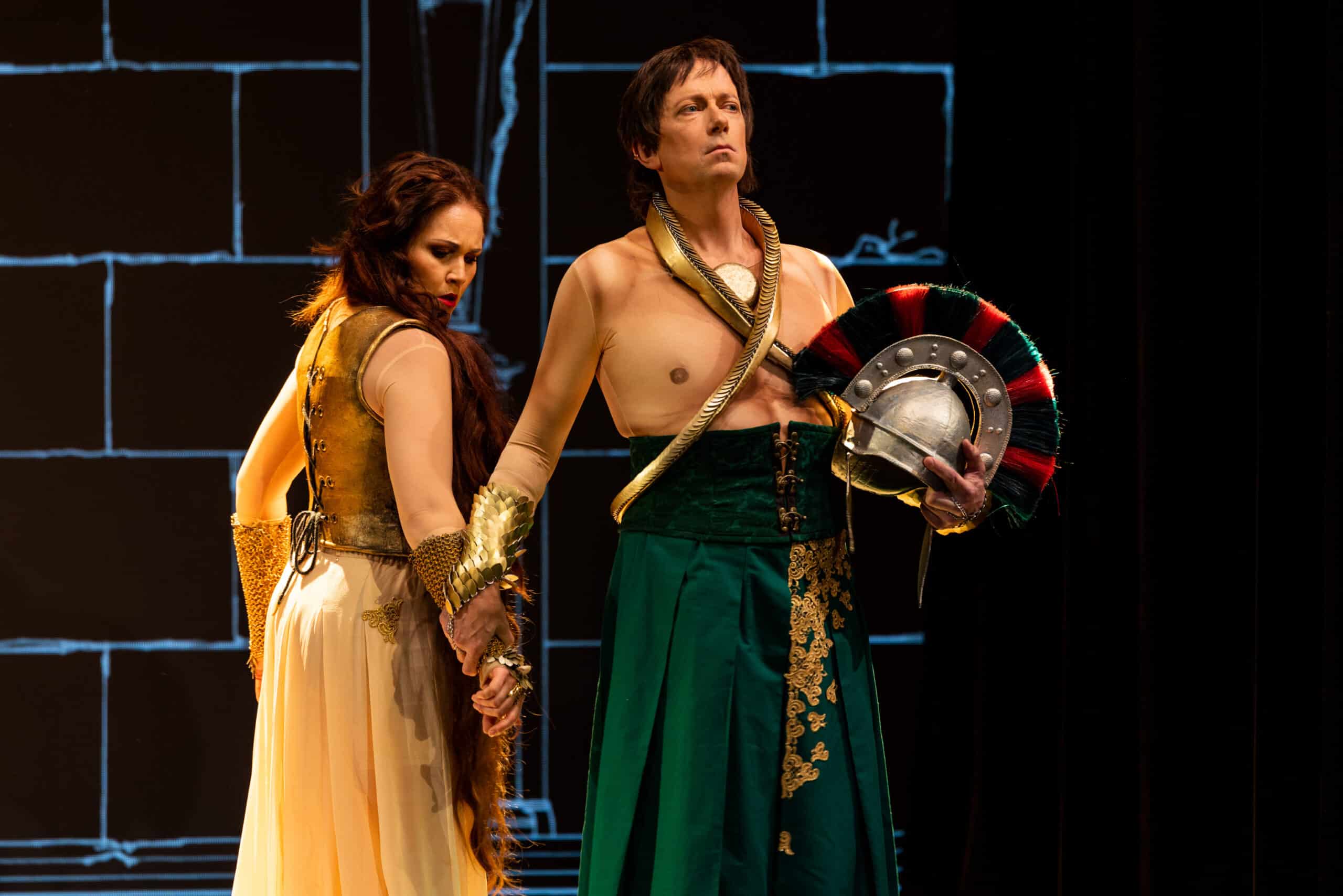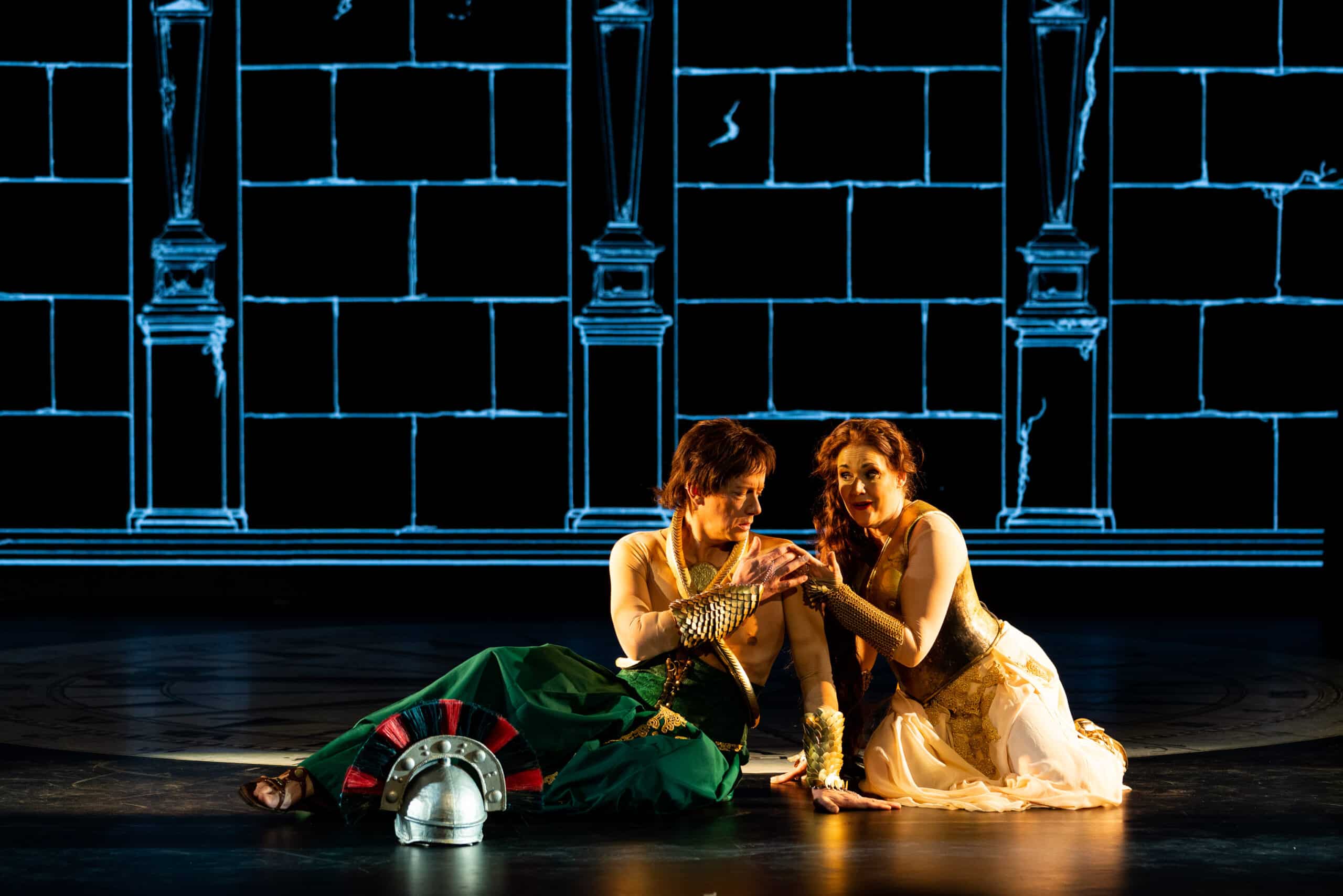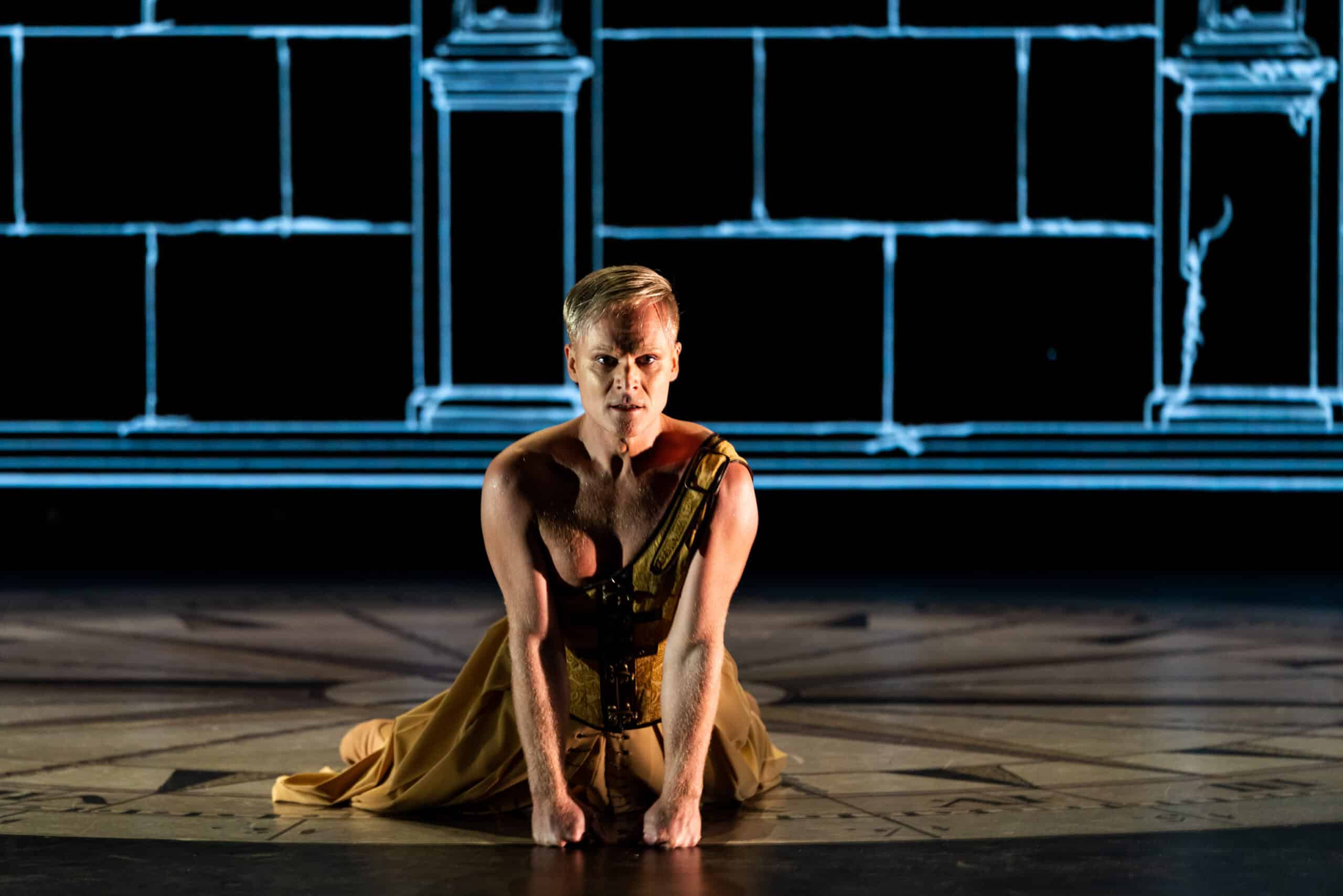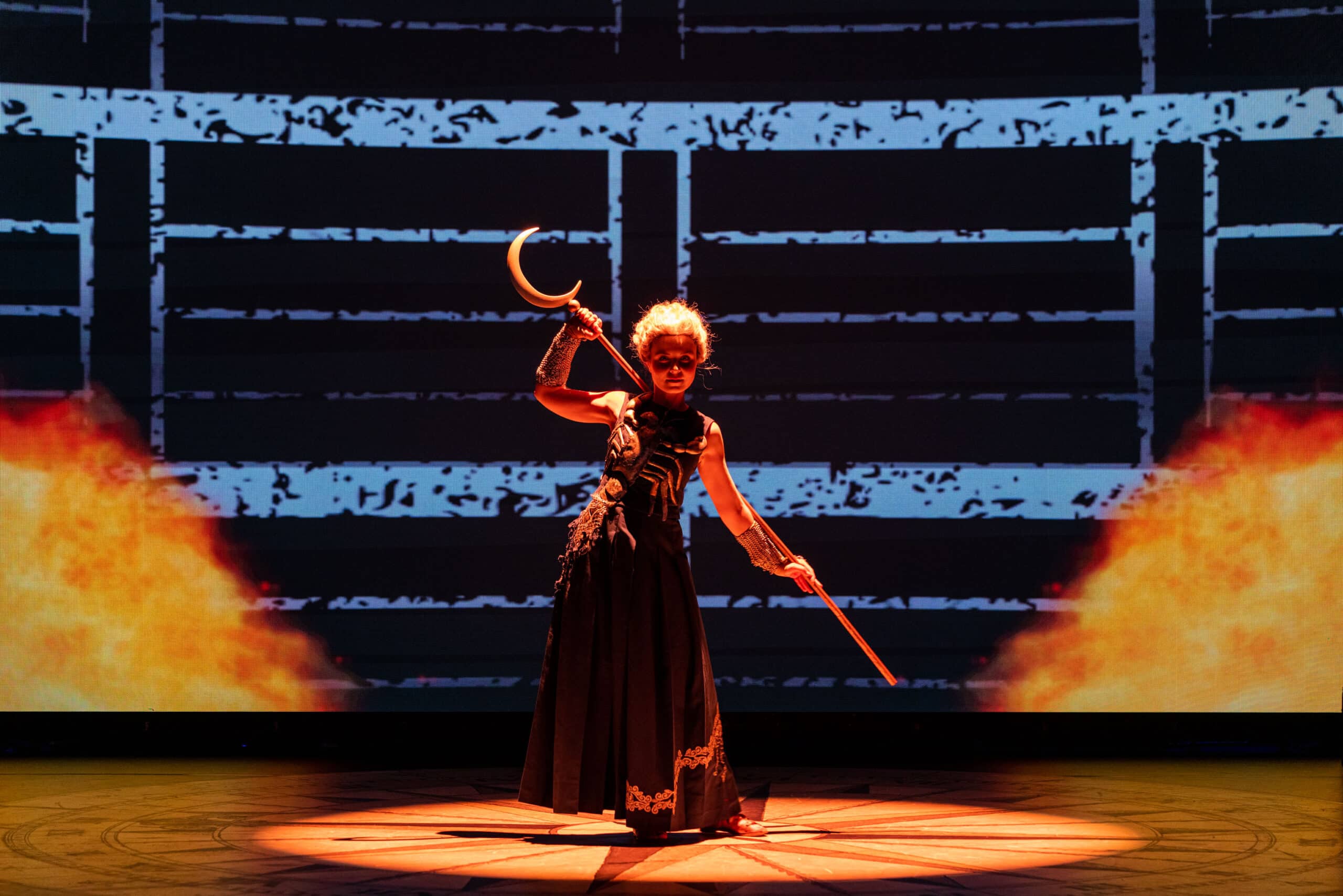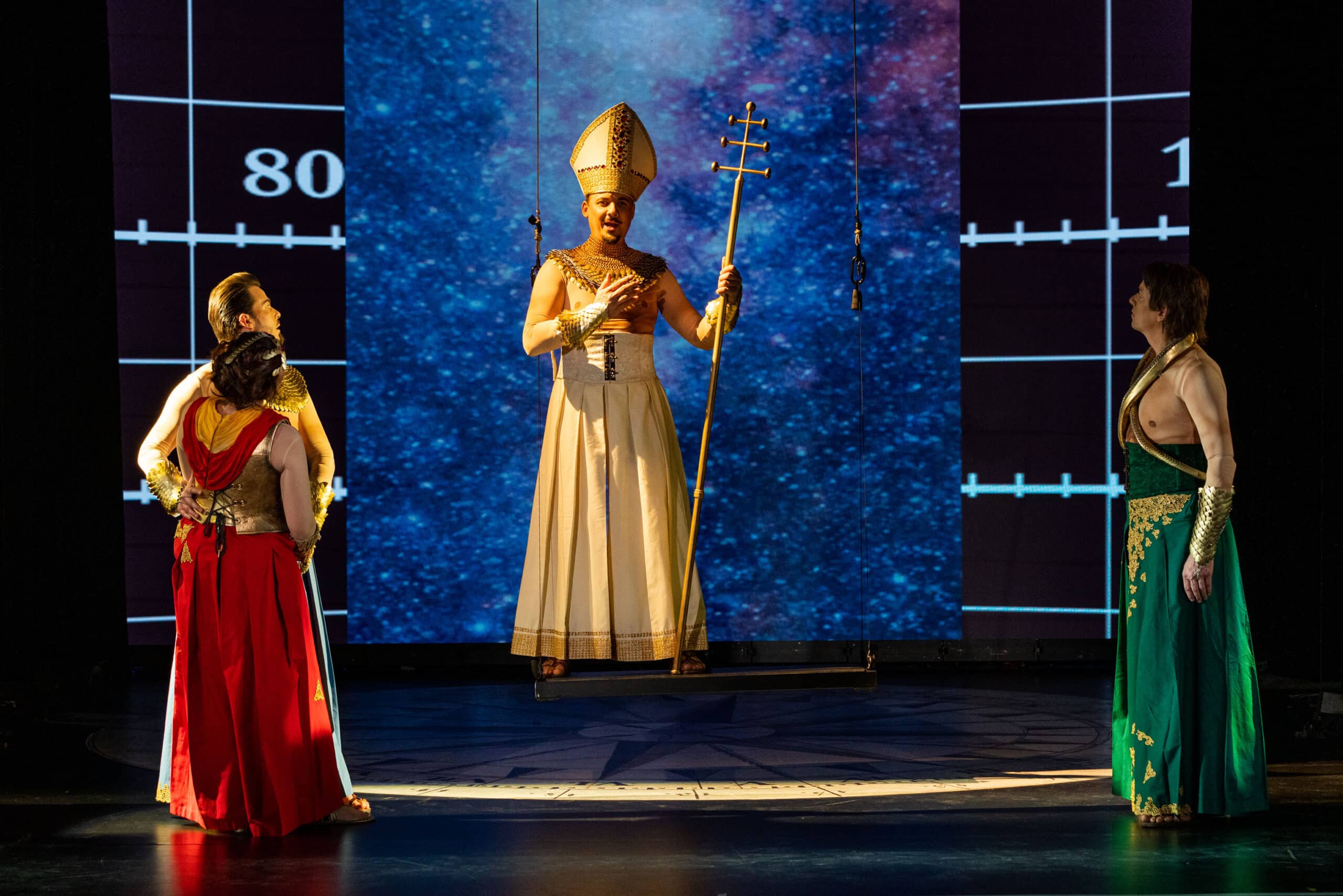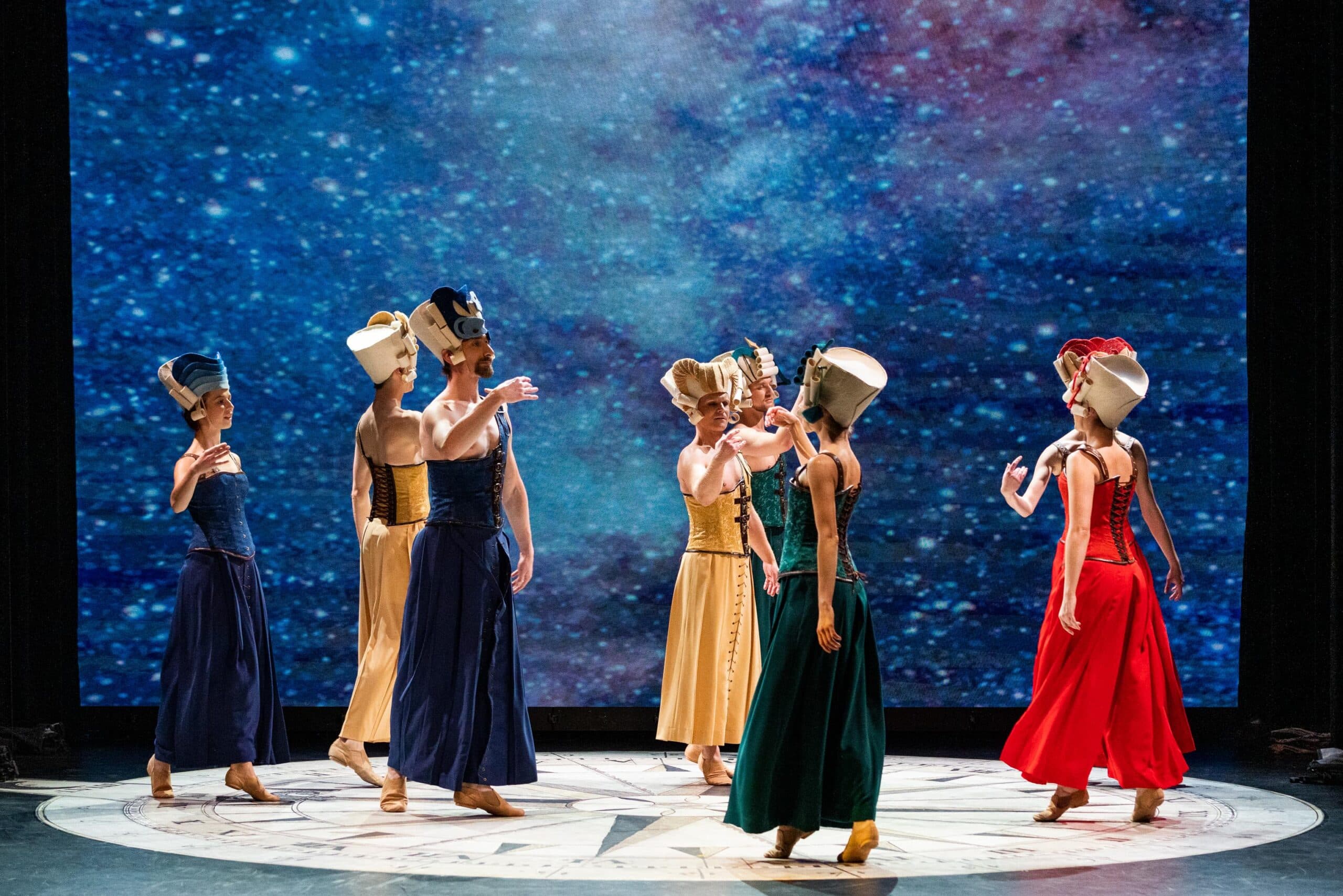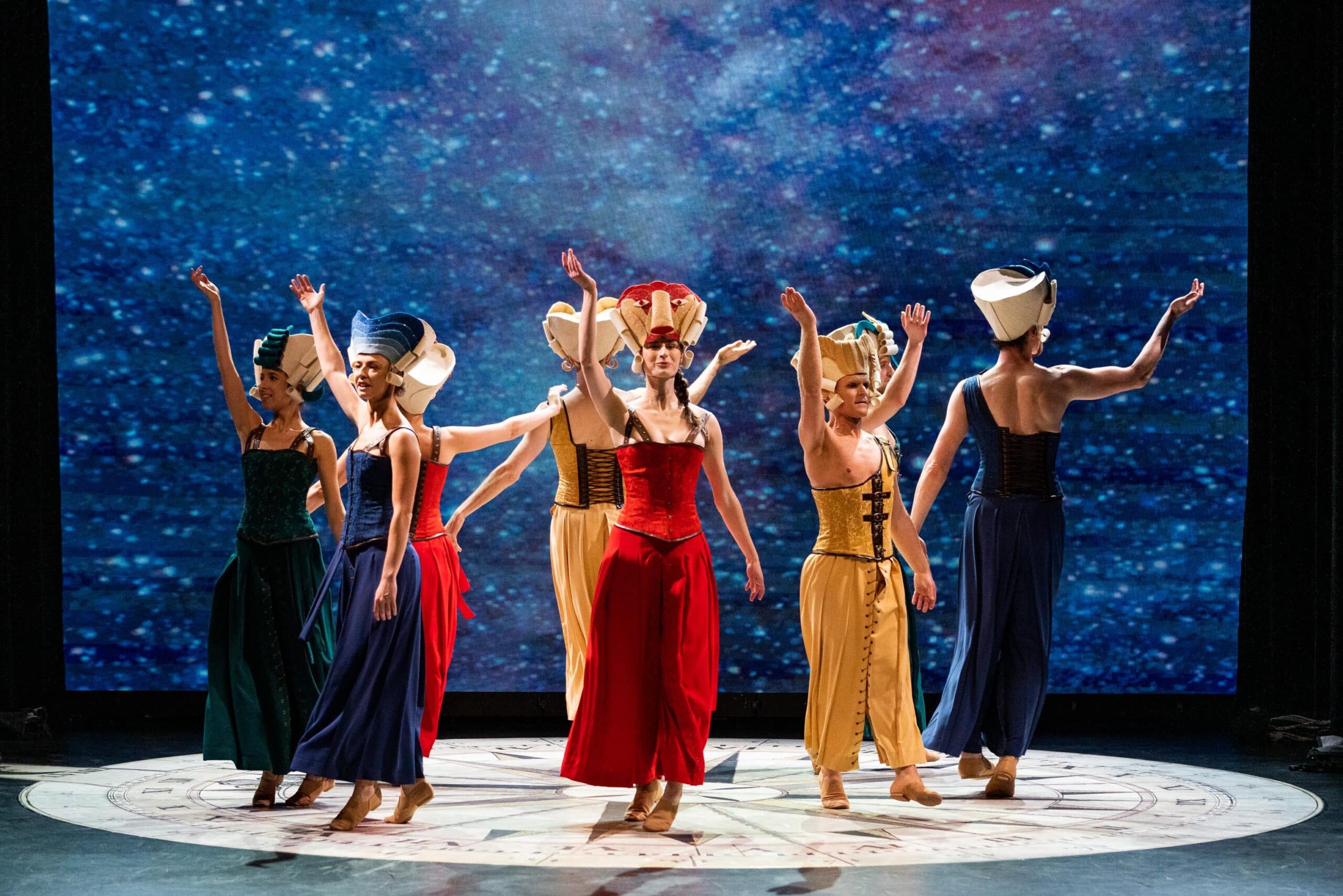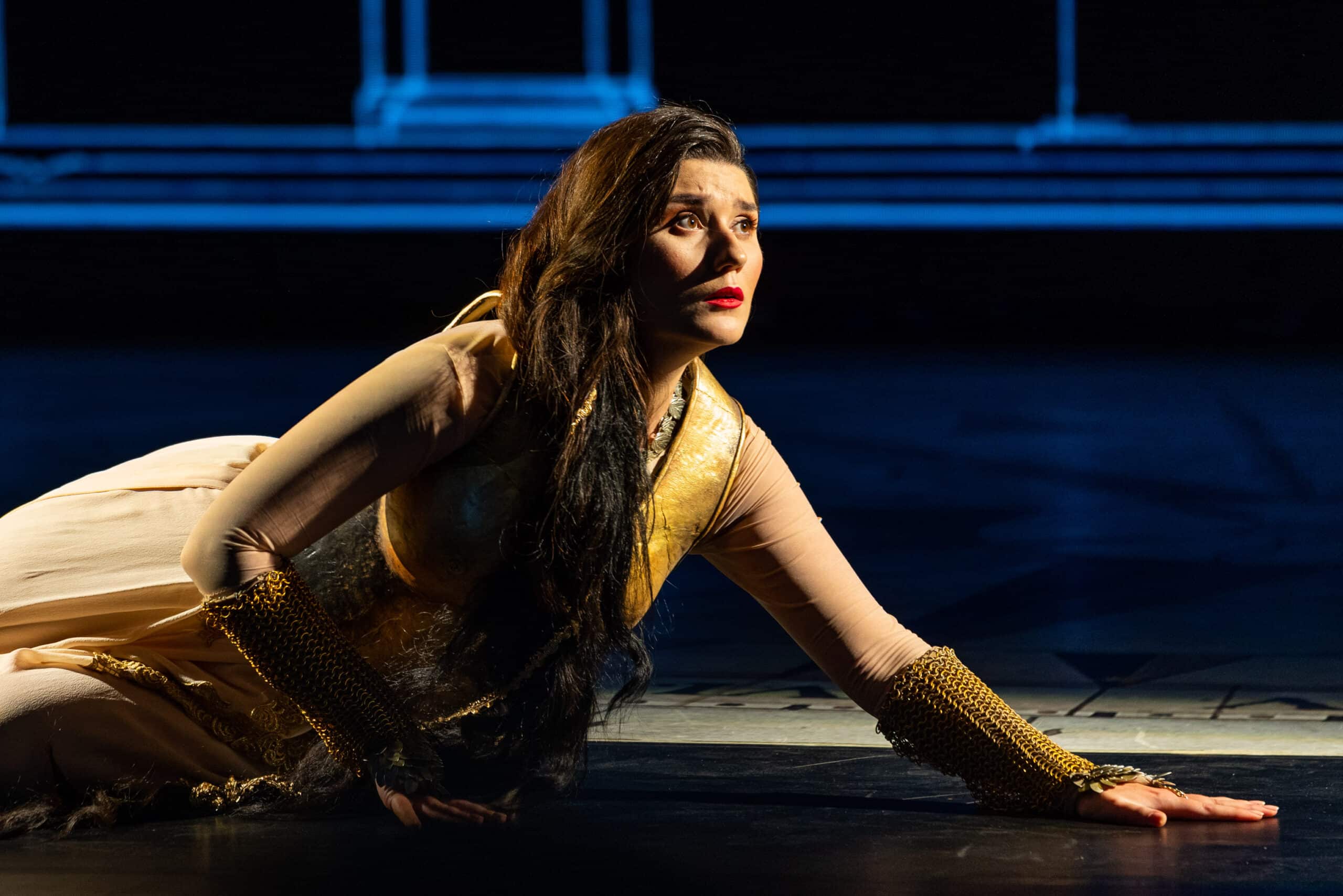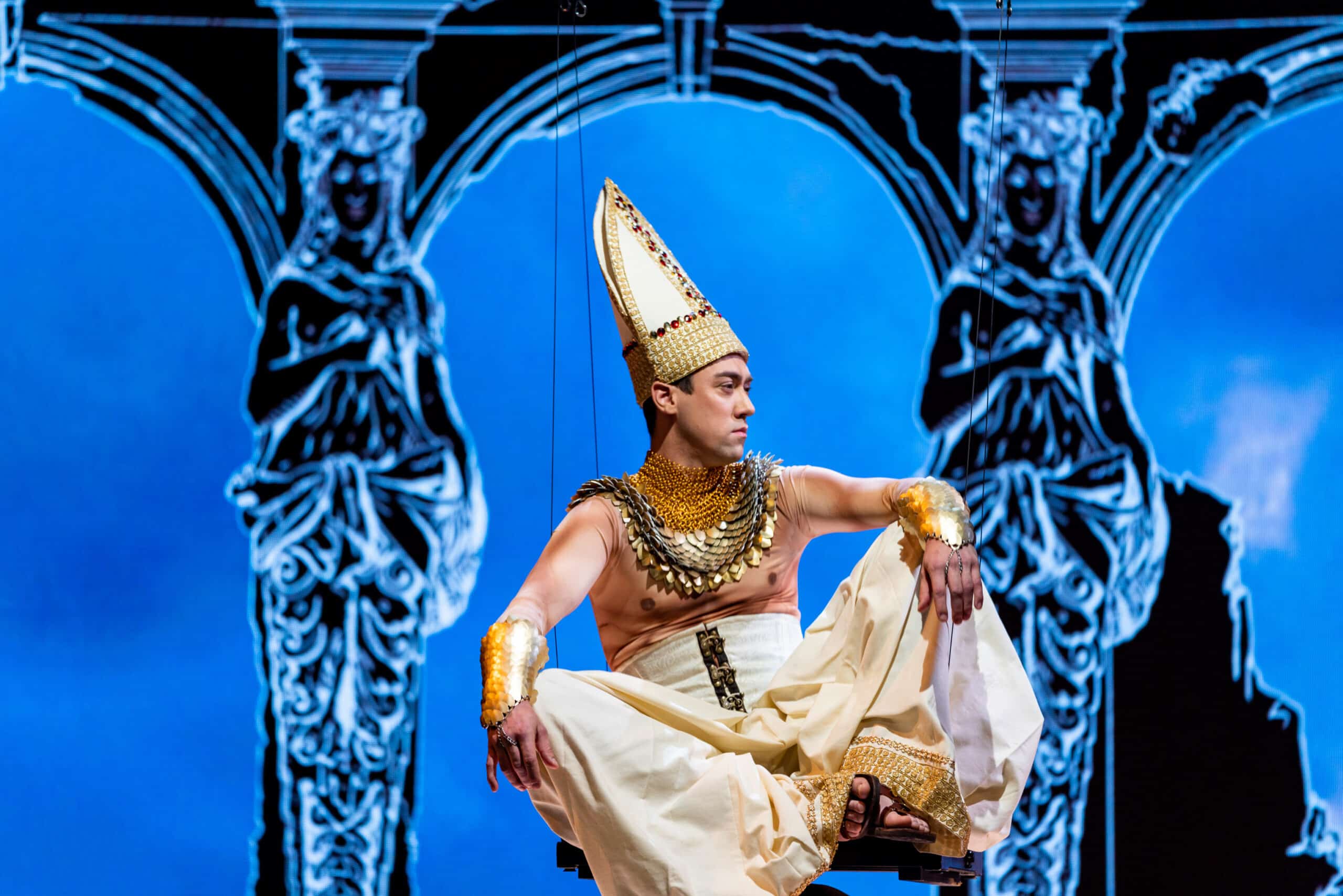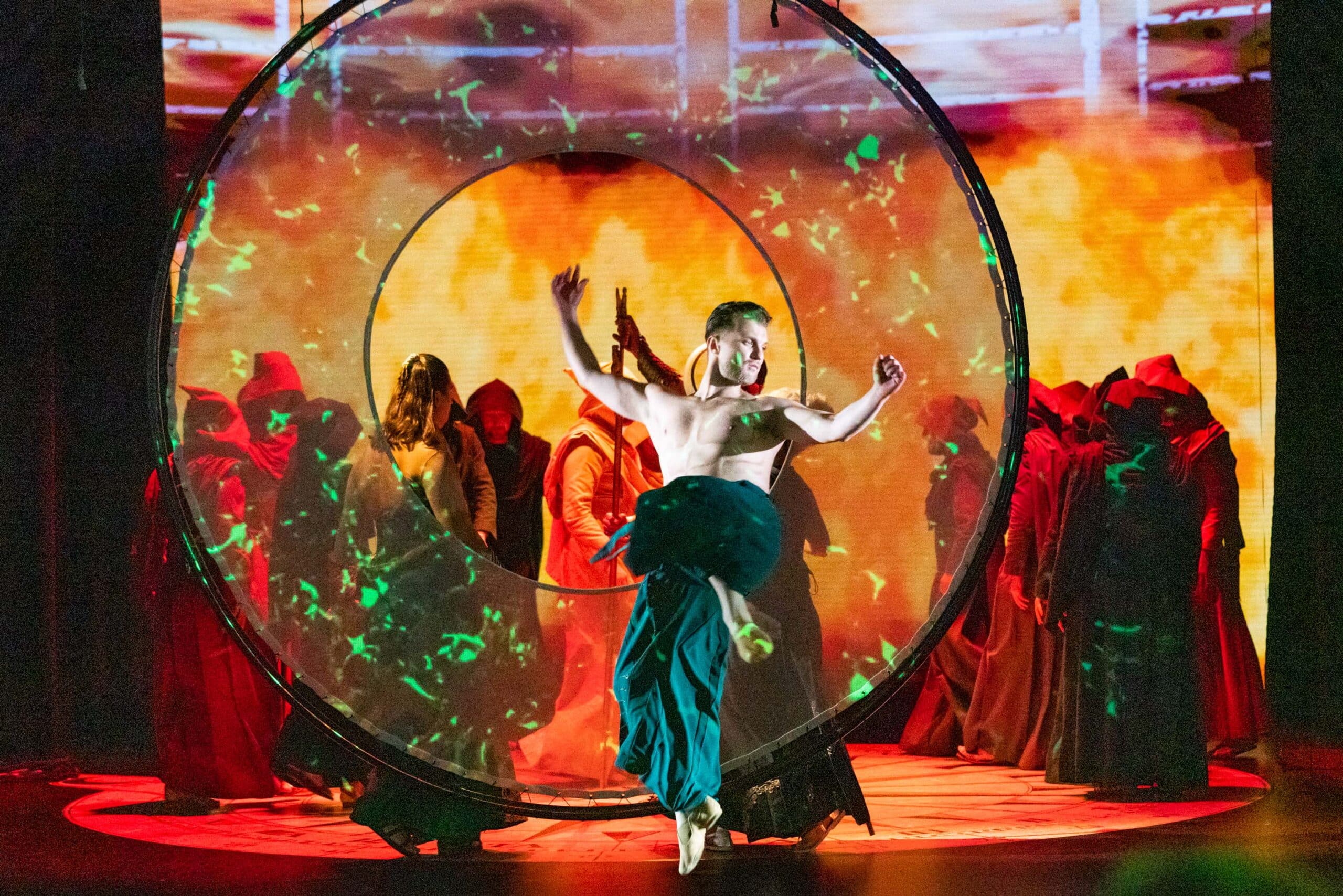Castor et Pollux
Jean-Philippe Rameau
Castor et Pollux
Theatre of of the Warszawska Opera Kameralna
Libretto: Pierre-Joseph Bernard
Premiere | 27 November 2021
Music director/conductor: Benjamin Bayl
Director and choreographer: Deda Cristina Colonna
Set design, costumes and lighting: Francesco Vitali
Duration: 140 minutes, 1 intermission
Artists:
Castor: Kieran White/Hubert Walawski
Pollux: Simon Robinson/Kamil Zdebel
Télaïre: Judith van Wanroij/Tosca Rousseau
Phoebé: Marta Brzezińska/Anna Werecka-Gryć
Jupiter: Dawid Biwo/Piotr Pieron
Le Grand Prêtre de Jupiter: Wojciech Sztyk
Cléone / Une Suivante d’Hébé / Une Ombre Heureuse: Ingrida Gapova/Joanna Radziszewska
Un Spartiate / Un Athlète / Mercure: Aleksander Rewiński/Aleksander Kunach
Dancers:
Alberto Arcos
Elisa Bermejo Gómez
Sławomir Greś
Valerie Lauer
Joanna Lichorowicz-Greś
Adrian Navarro
Aleksandra Pawluczuk
Dominik Skorek
Harpsichord: Ewa Mrowca
Vocal Ensemble of the Warszawska Opera Kameralna
Chorus master – Krzysztof Kusiel-Moroz
Period Instrument Orchestra of the Warszawska Opera Kameralna
Musicae Antiquae Collegium Varsoviense
Animations: Giardino Artlab22 Milan
Multimedia mapping: Pro4Media Warsaw
After the premiere of the opera “Armide” has turned out to be a huge success for the Warsaw chamber musicians, the director of the Warszawska Opera Kameralna, D.Sc. Alicja Węgorzewska-Whiskerd invited the same duo of Italian producers to work on another great production. This time, Deda Cristina Colonna and Francesco Vitali staged in Warsaw Jean-Philippe Rameau’s opera “Castor et Pollux”.
The show tells a beautiful story of a journey of two brothers Castor (mortal) and Pollux (immortal), who walk together through life, death, jealousy and love.
– My vision of staging and choreography of „Castor et Pollux” at the Warszawska Opera Kameralna is to view the libretto through the esoteric astronomy, showing the story as a personal journey from one’s internal contradictions, to reaching human consciousness, and presenting nature as a harmony of contrasting forces. The characters presented in the drama will correspond to those from the Great Taro’s Lassos. I won’t tell anything more – says Deda Cristina Colonna before the premiere of the opera „Castor et Pollux”.
Through the figures of the Dioscuri, in Roman mythology known as Castors, Deda Cristina Colonna showed in her vision human features on the basis of its natural contrast, often confronting human and divine features. Thus, there was a space to show a boundless friendship, but also the void left by a loved one’s death, joy and its opposing pole – mourning.
Jean-Philippe Rameau presented to the world the opera “Castor et Pollux” at the Académie Royale de Musique in Paris on 24th of October in 1737. Within two months, the work was staged 21 times, and thanks to the revision made by the composer himself that was staged on 11th of January in 1754, “Castor et Pollux” was presented 254 times (from 1737 to 1785) and was considered a masterpiece of French opera.

